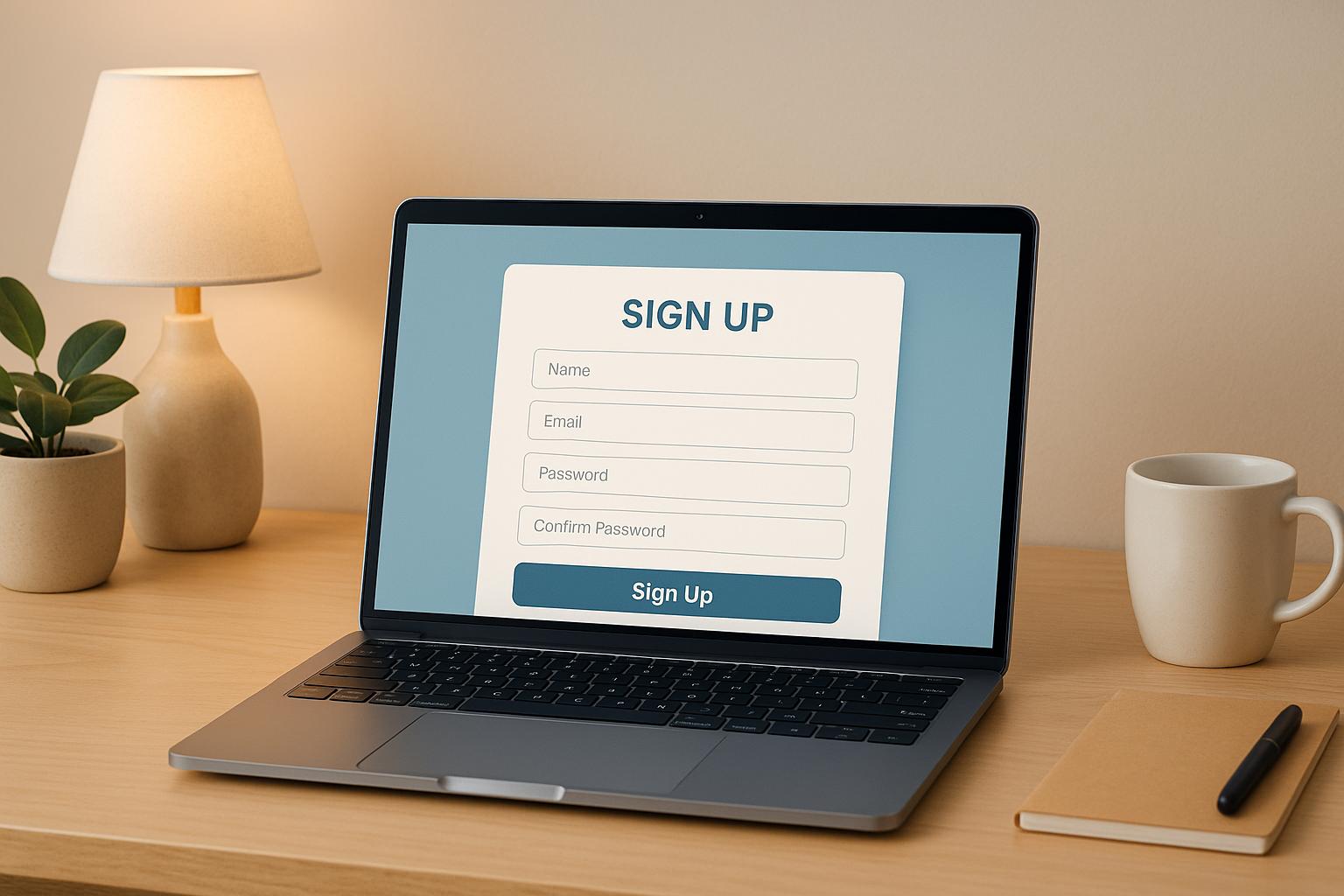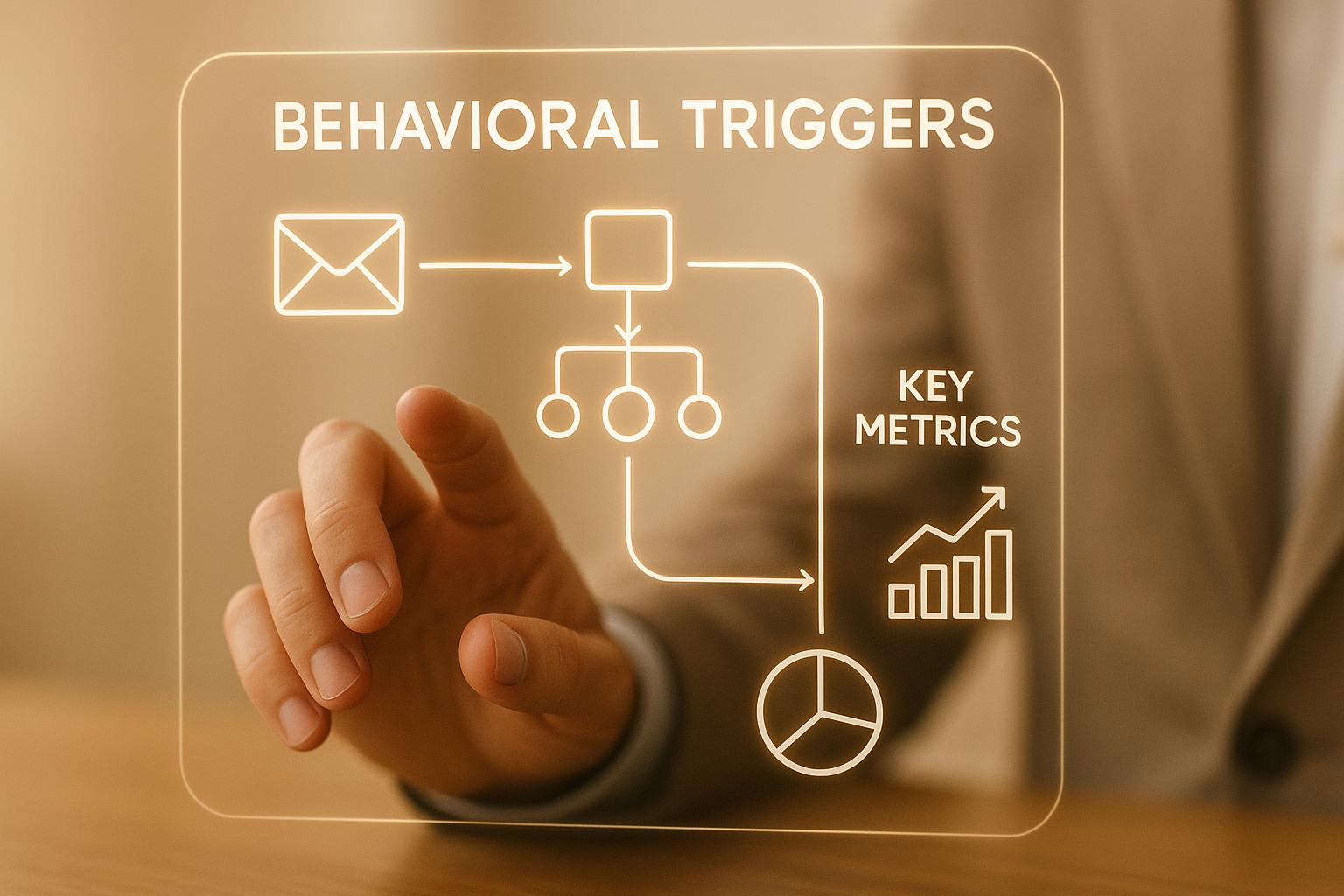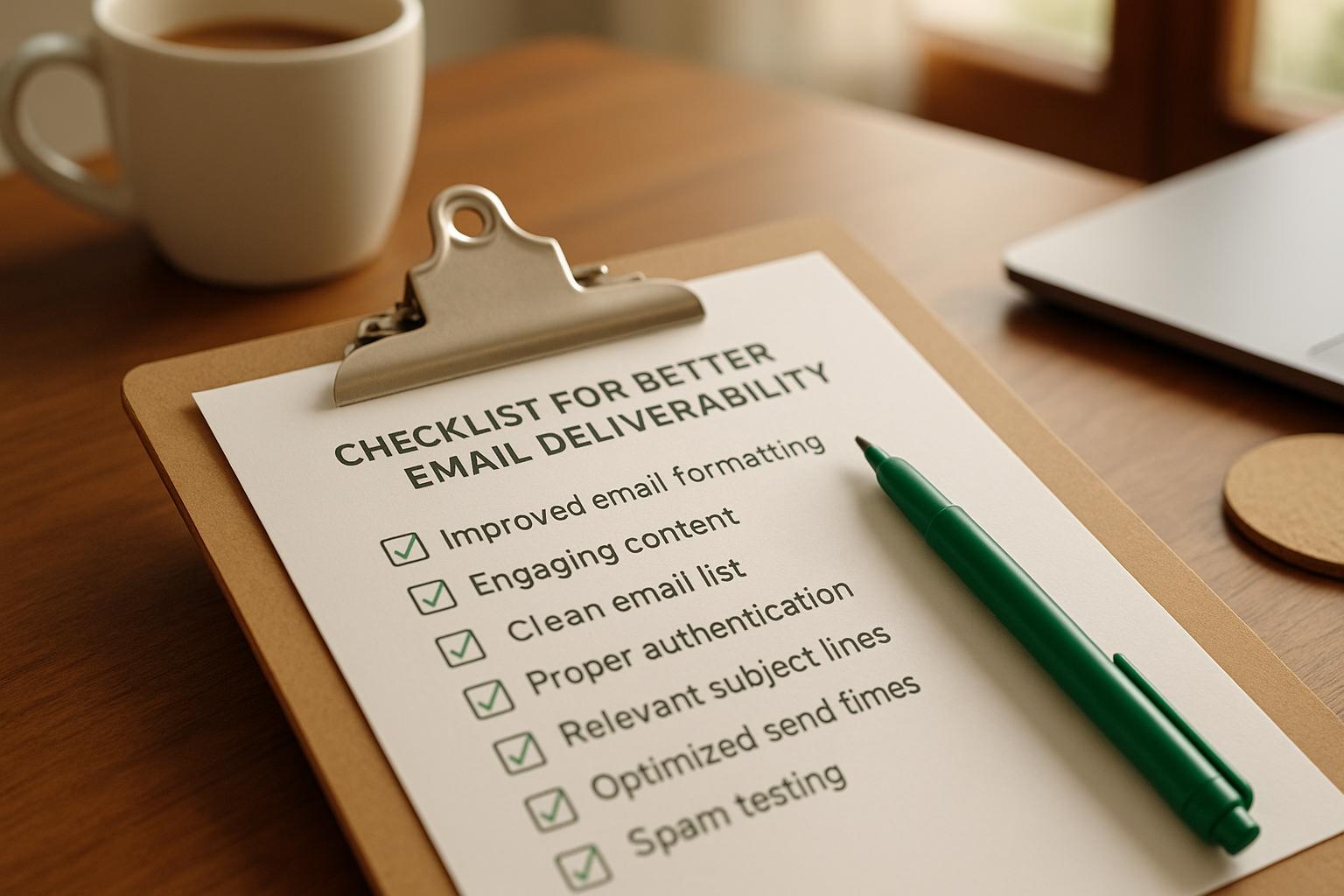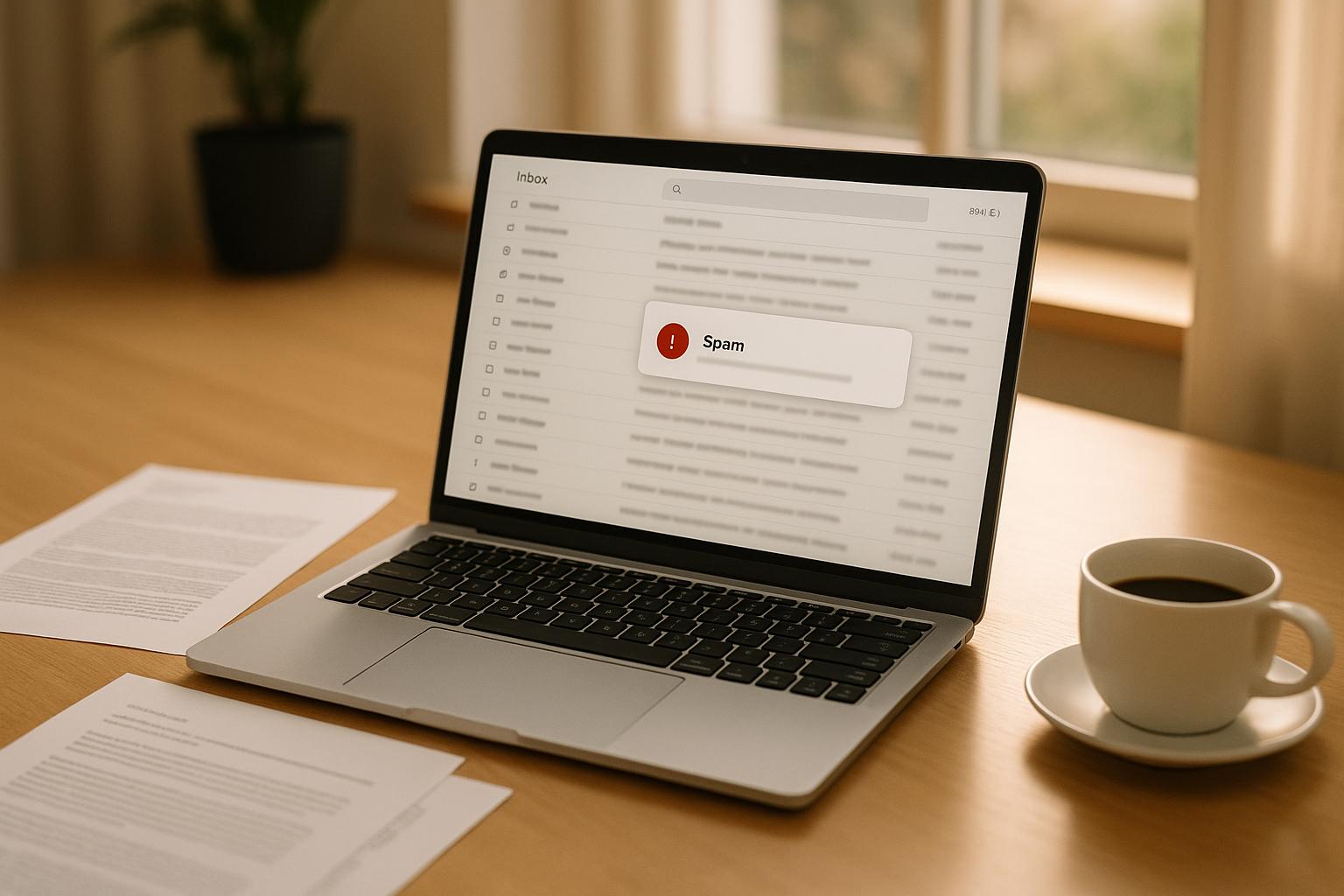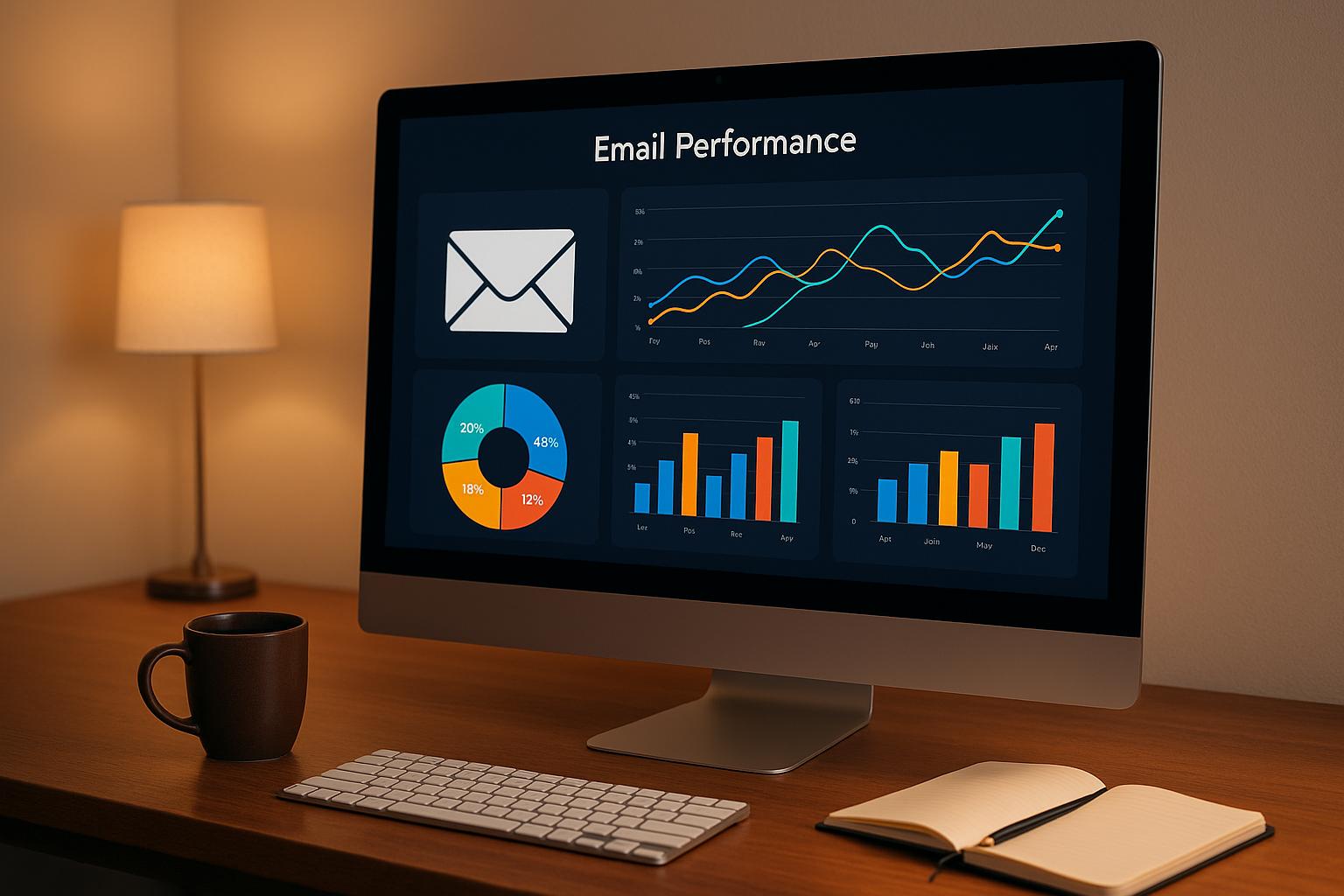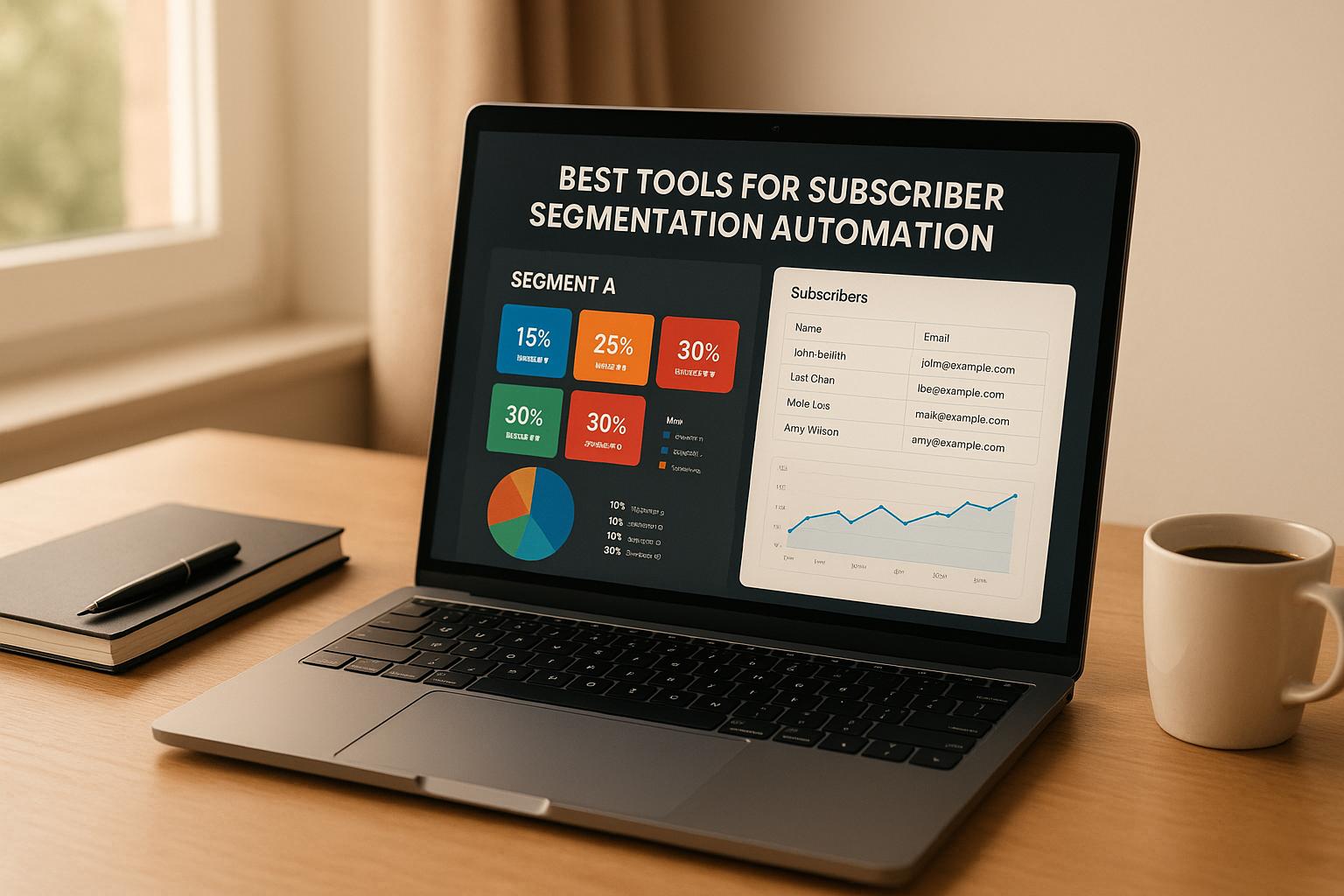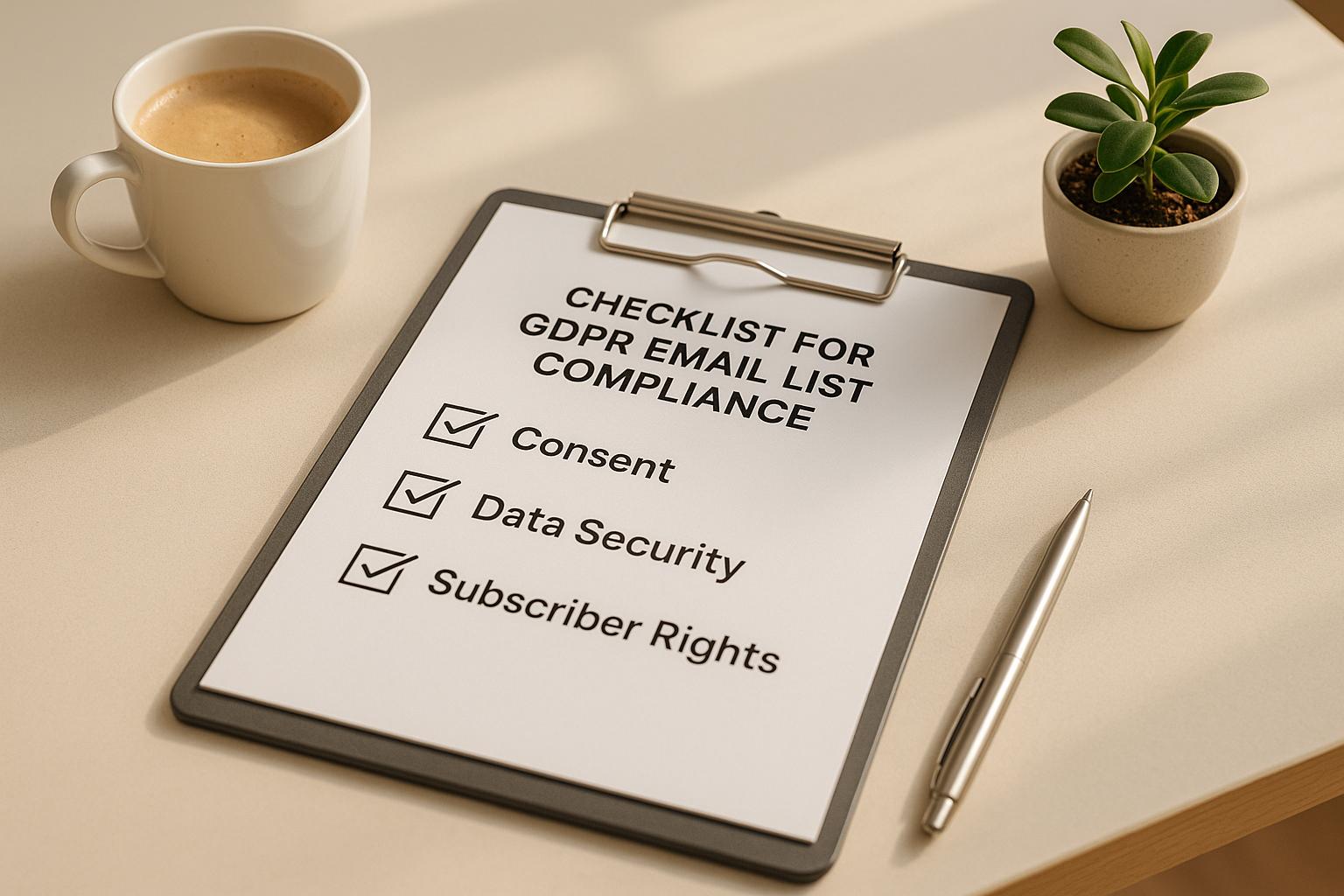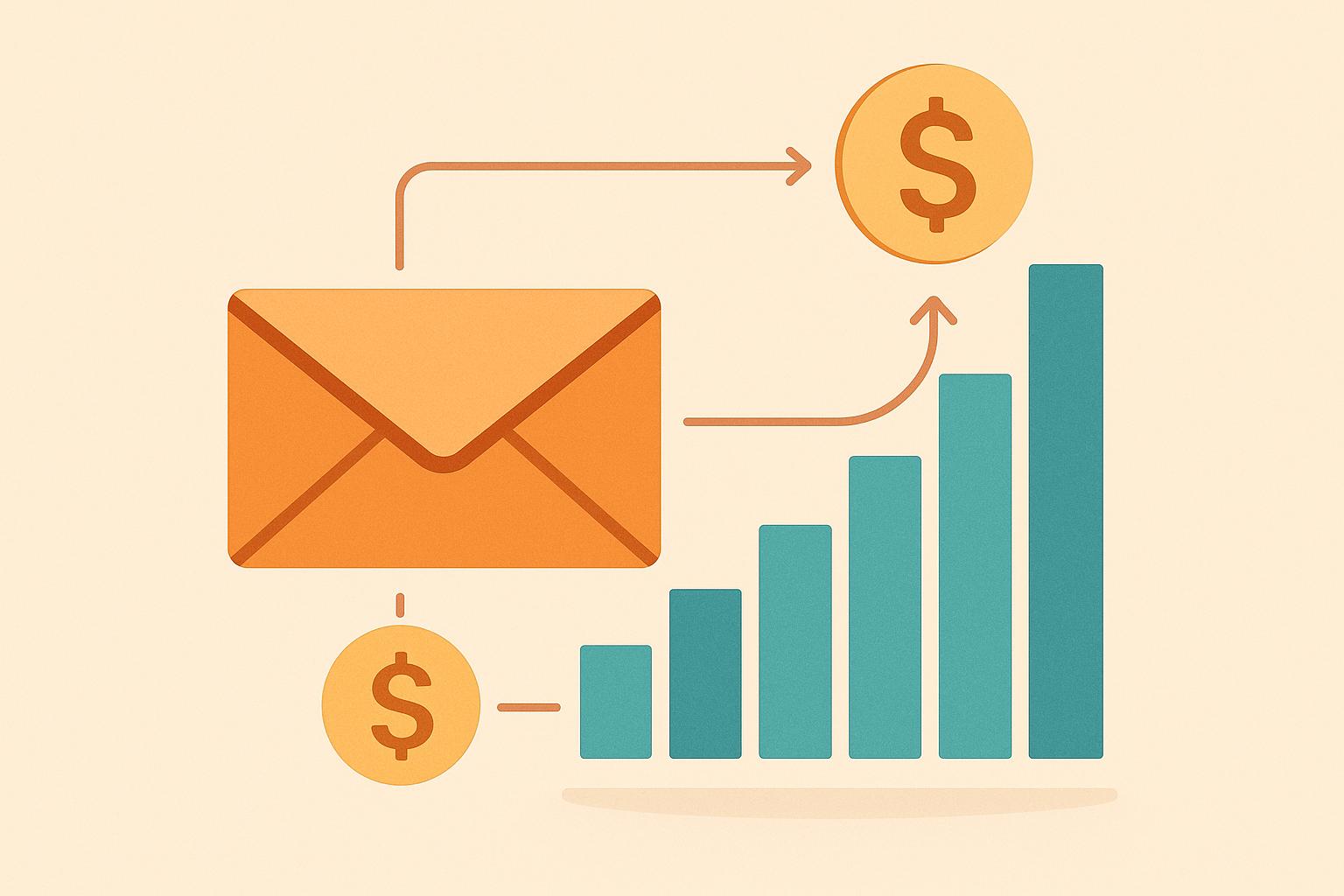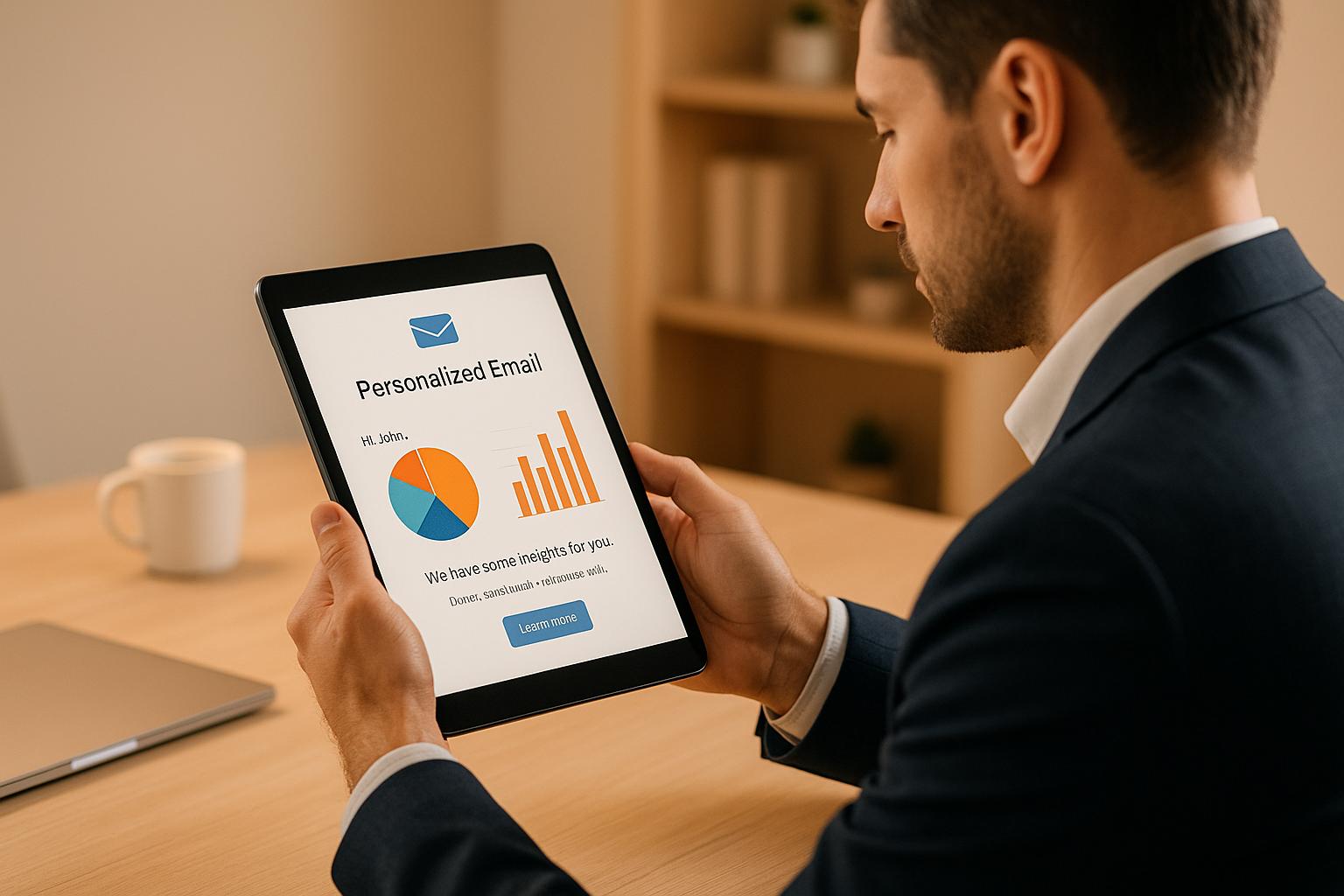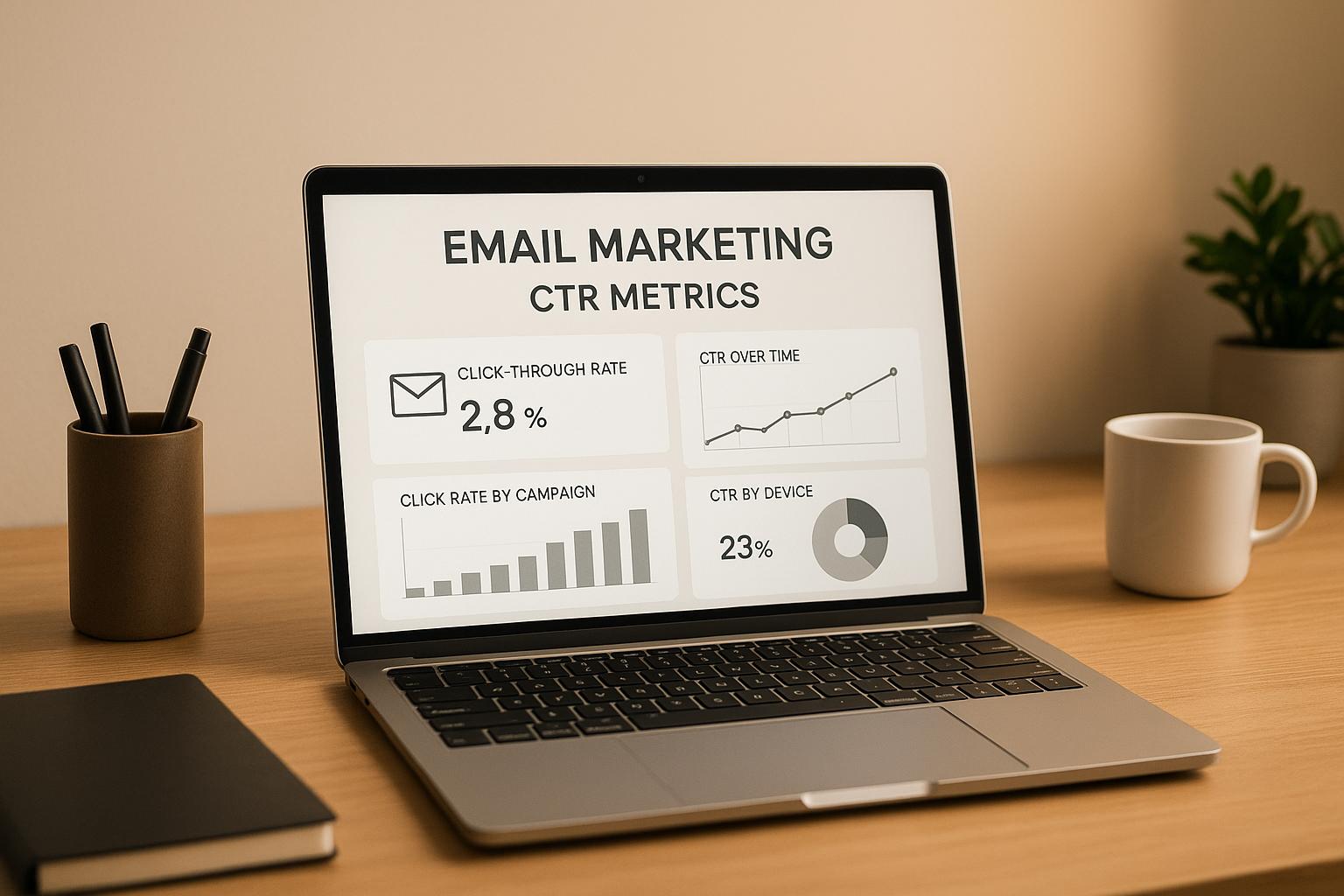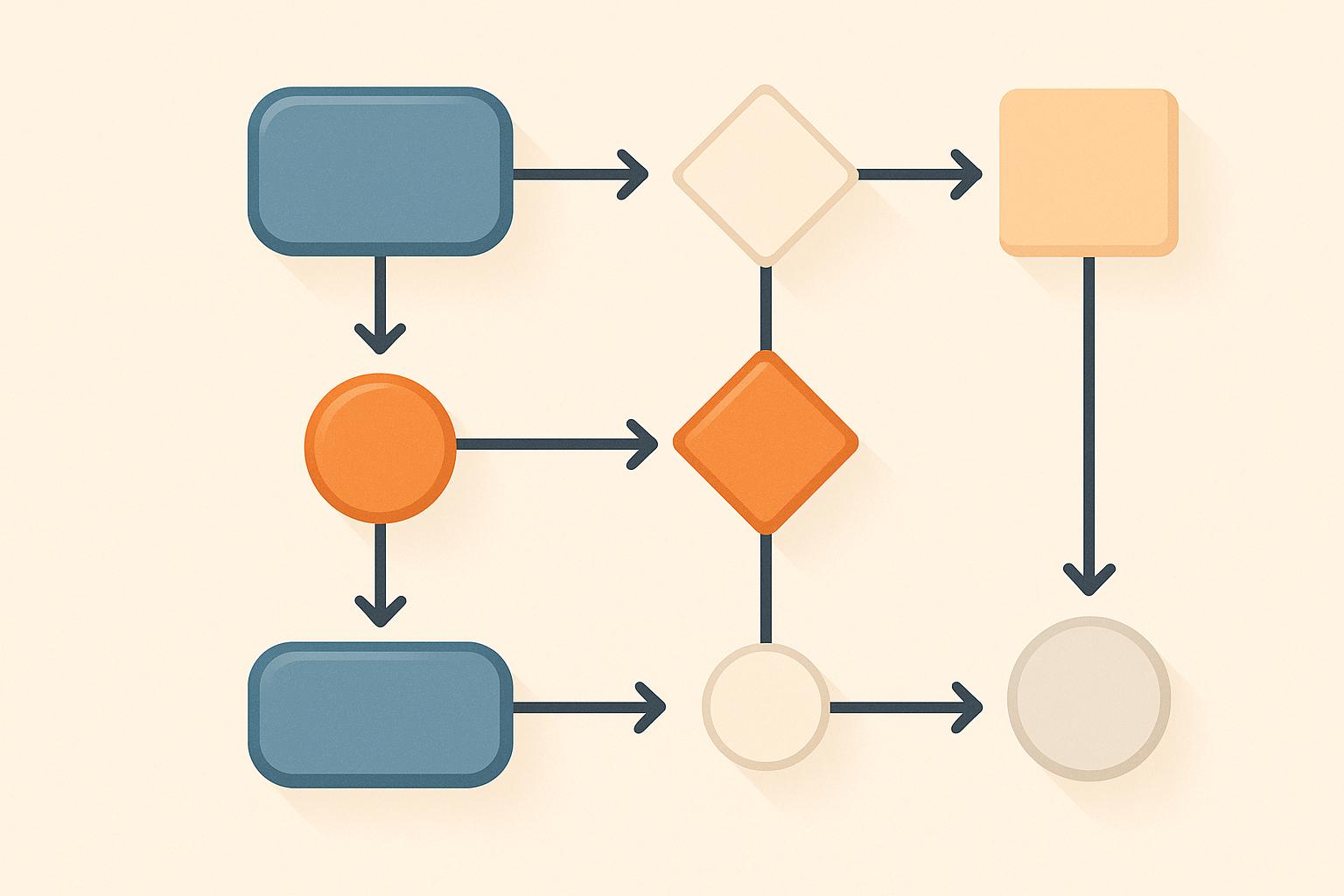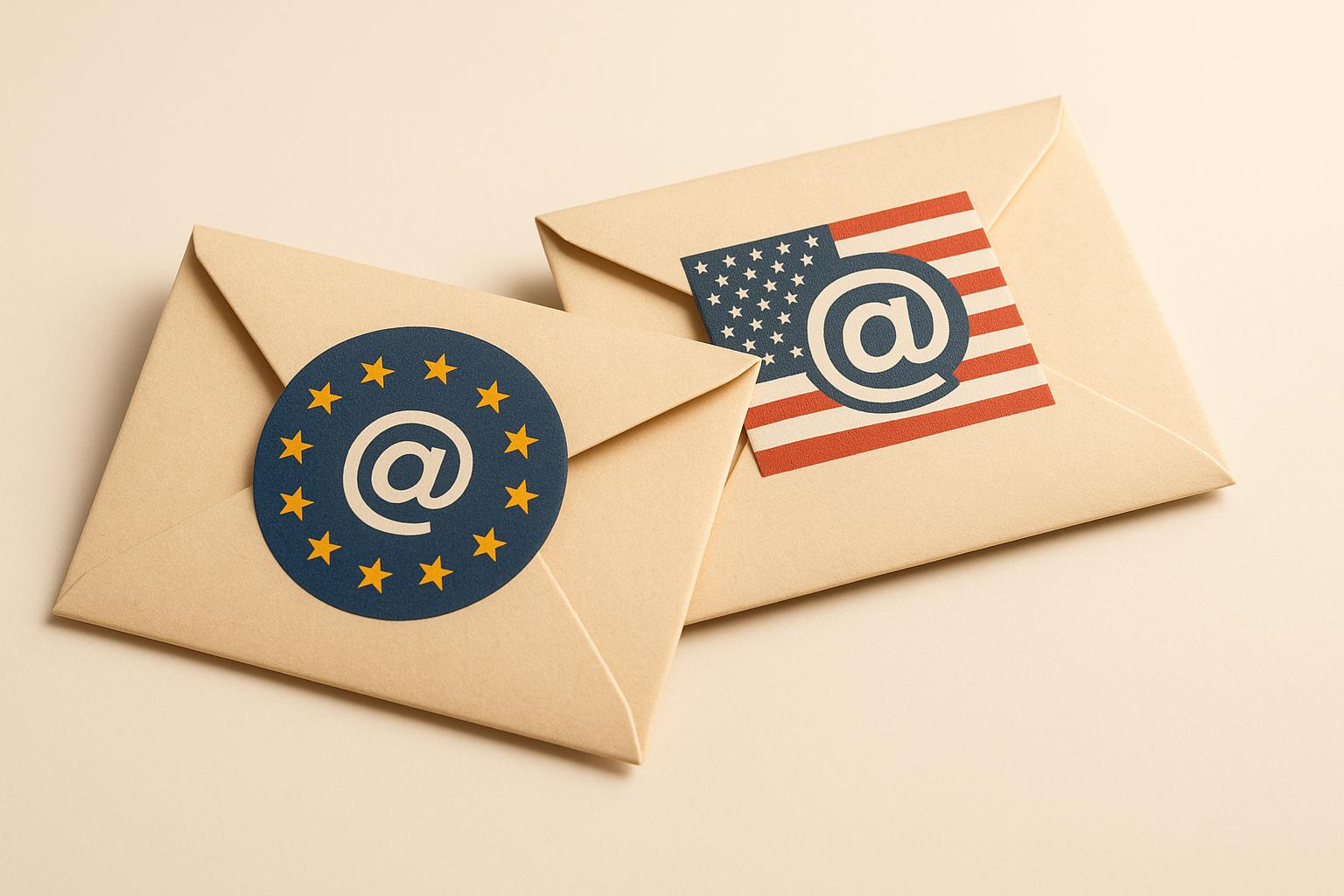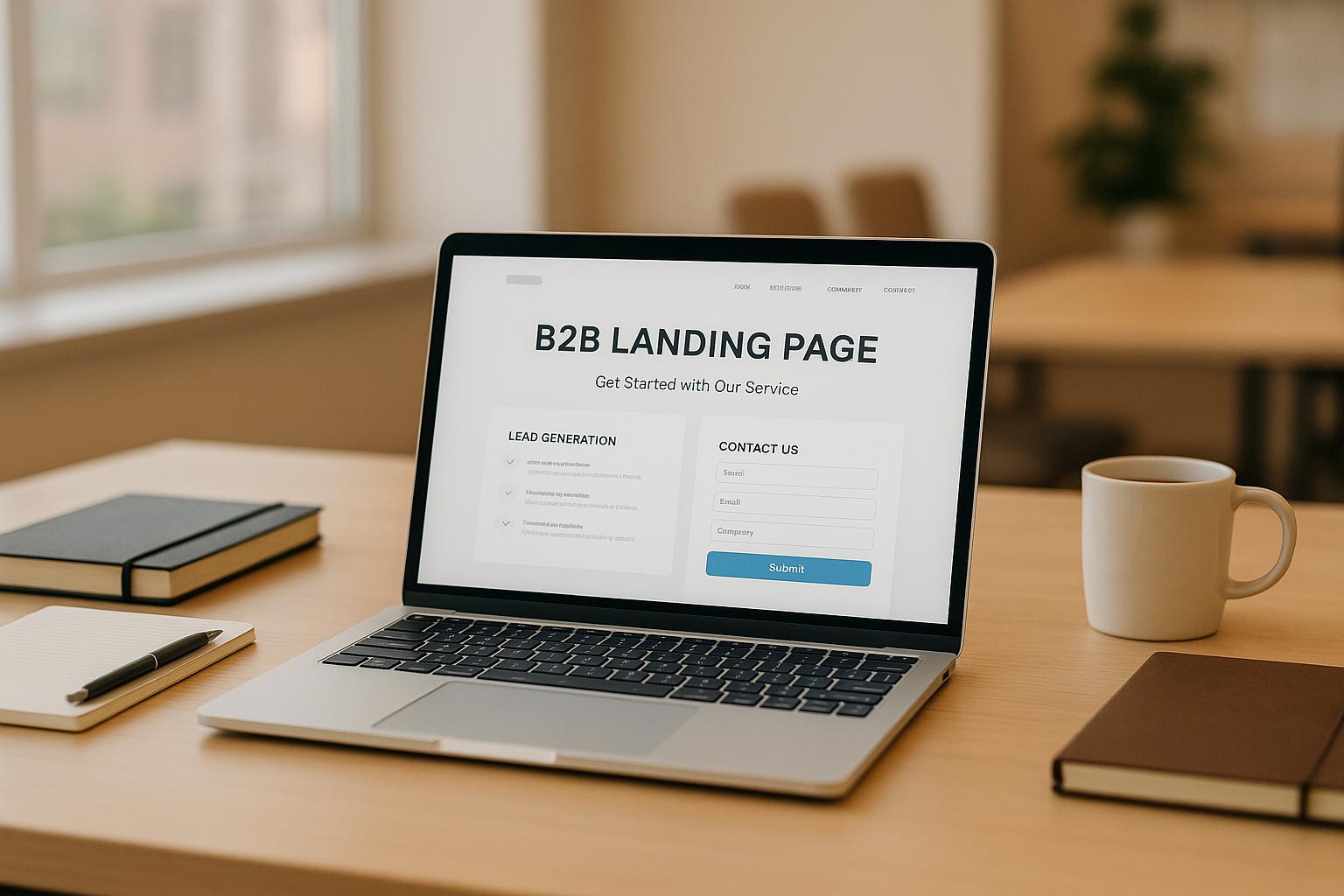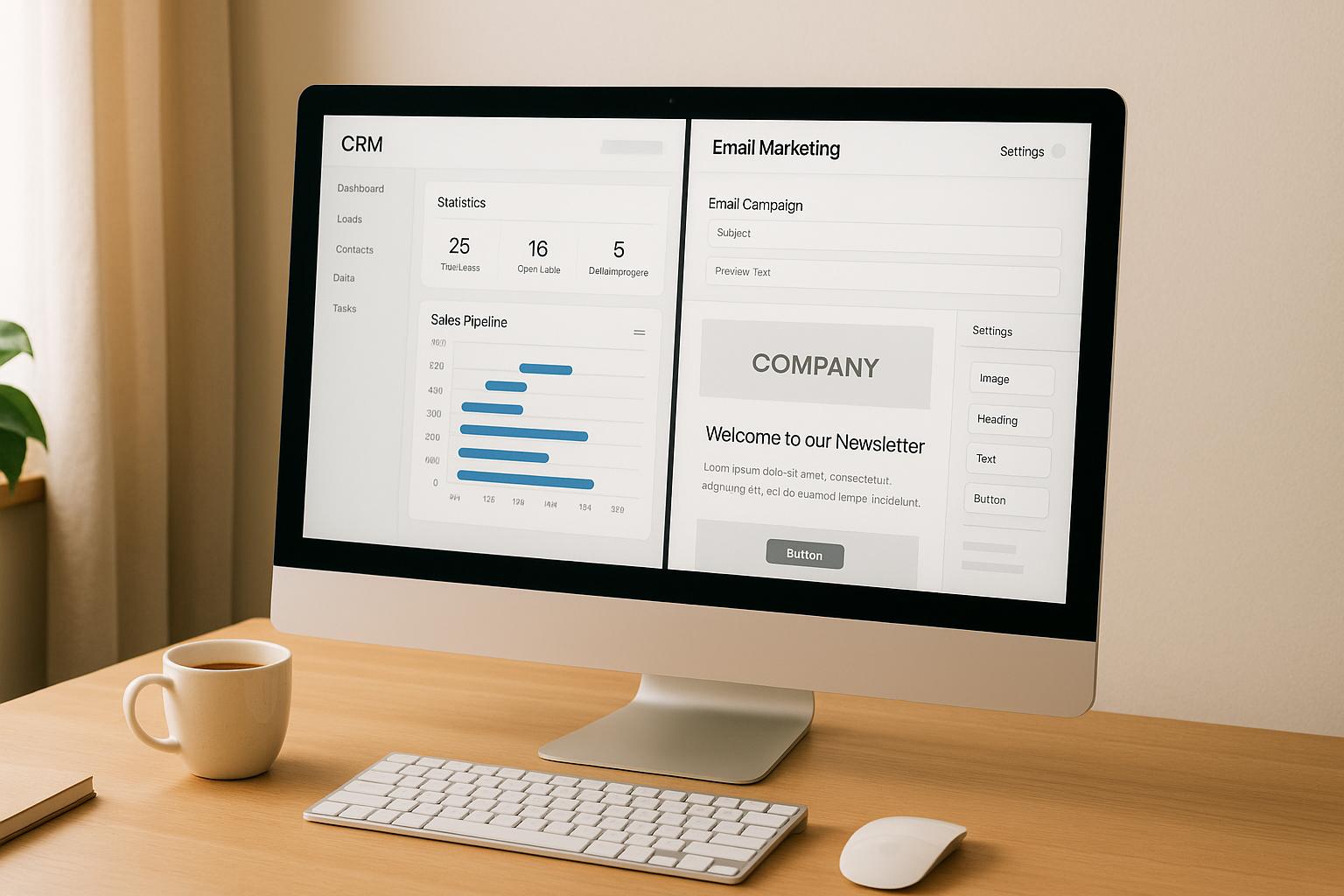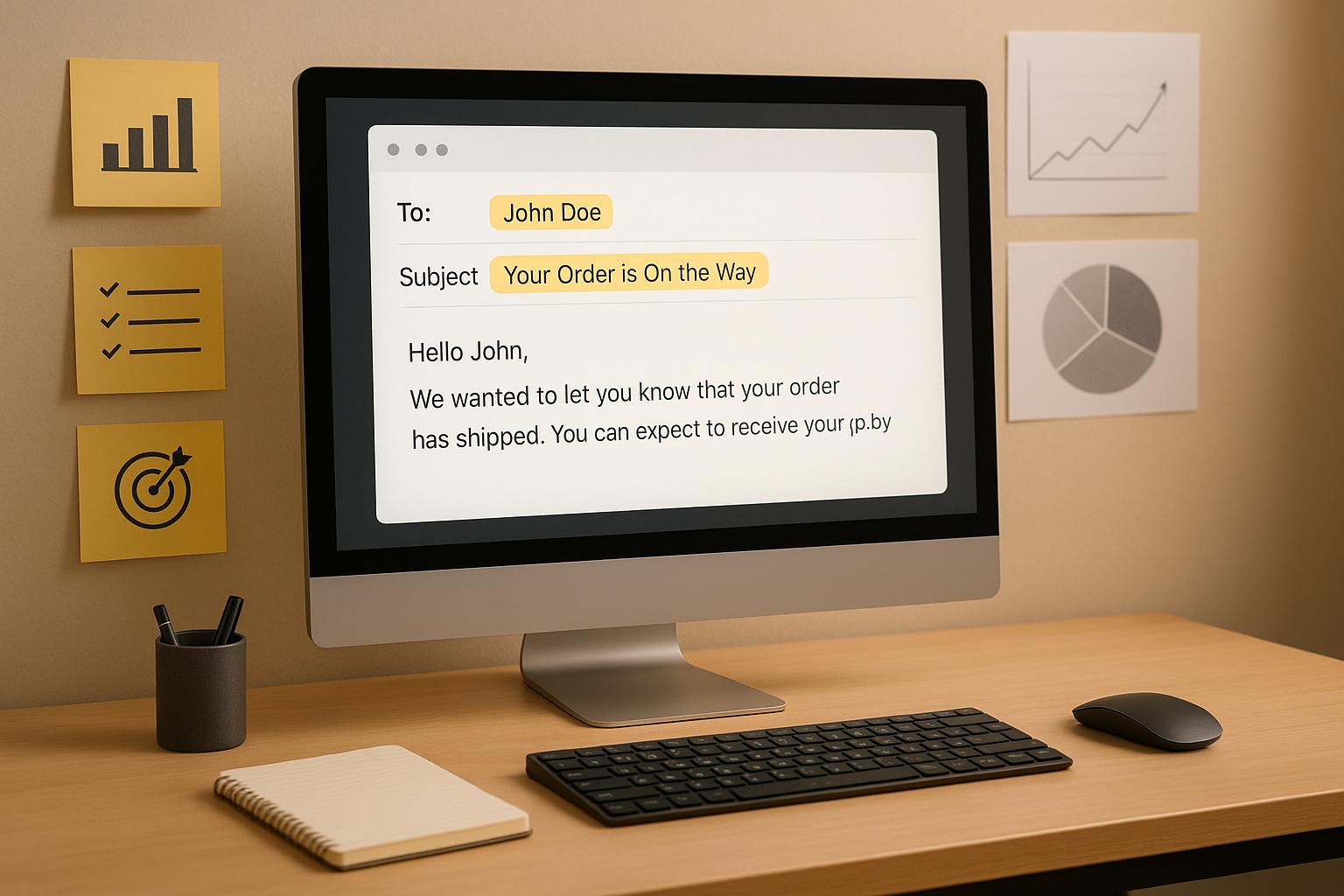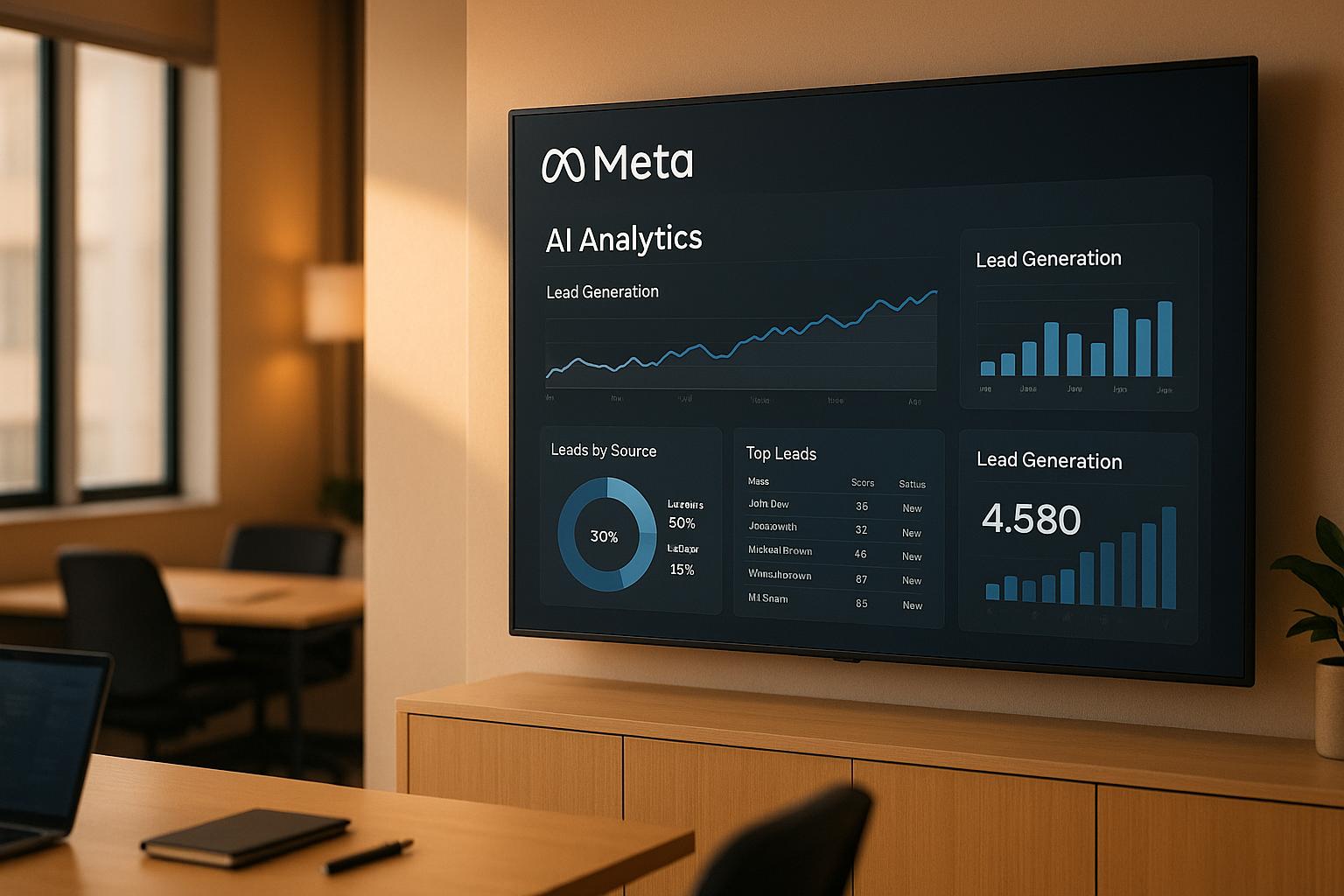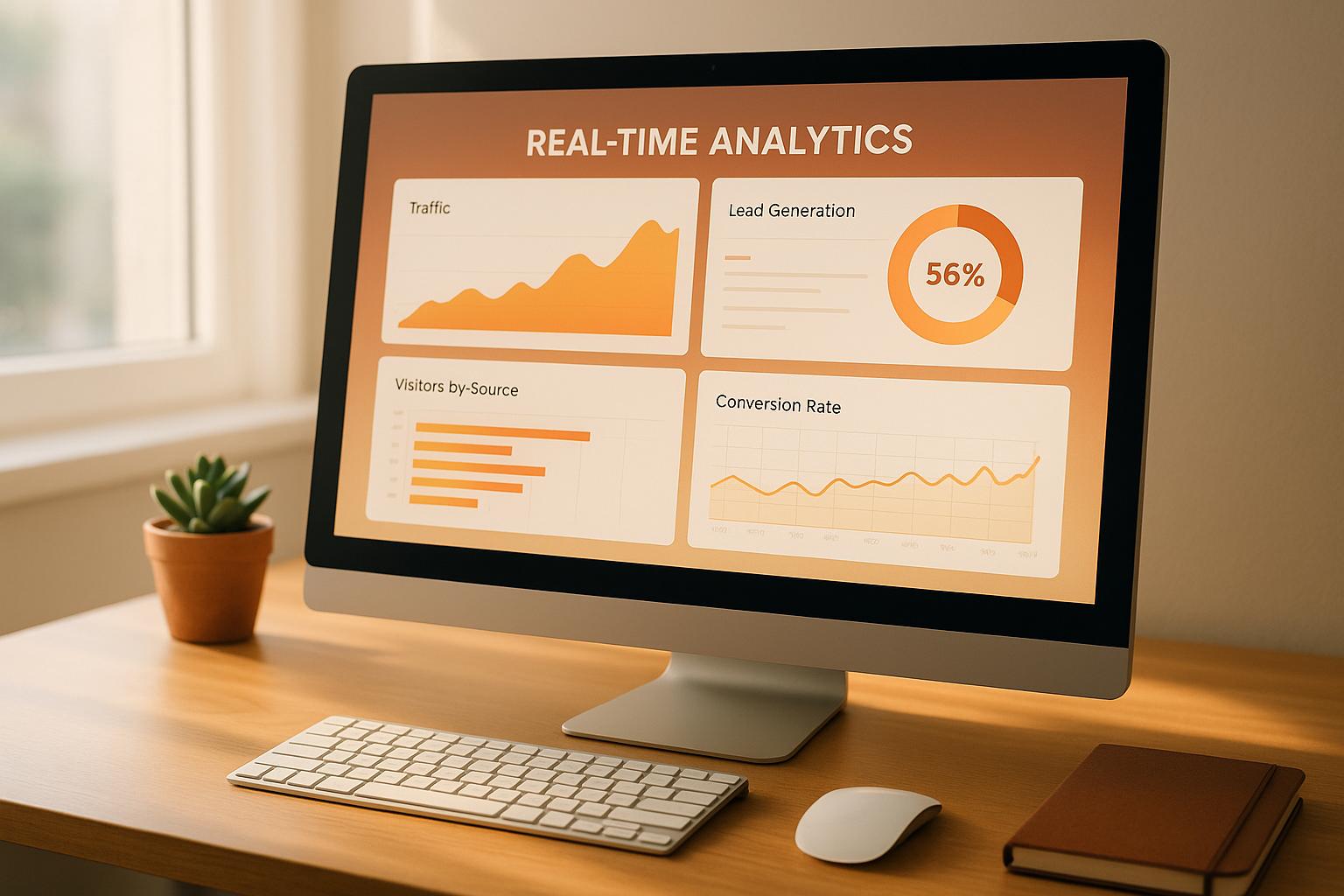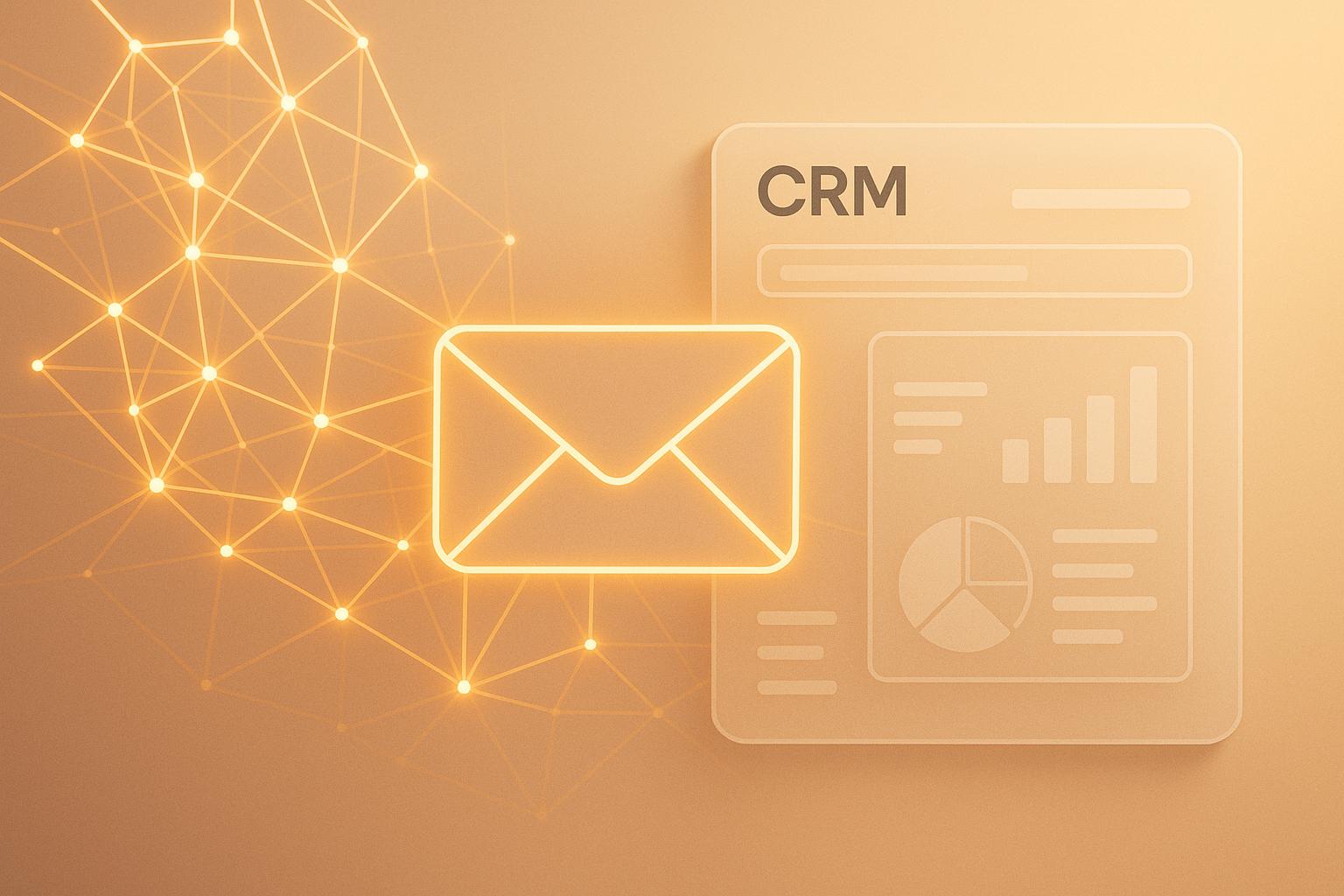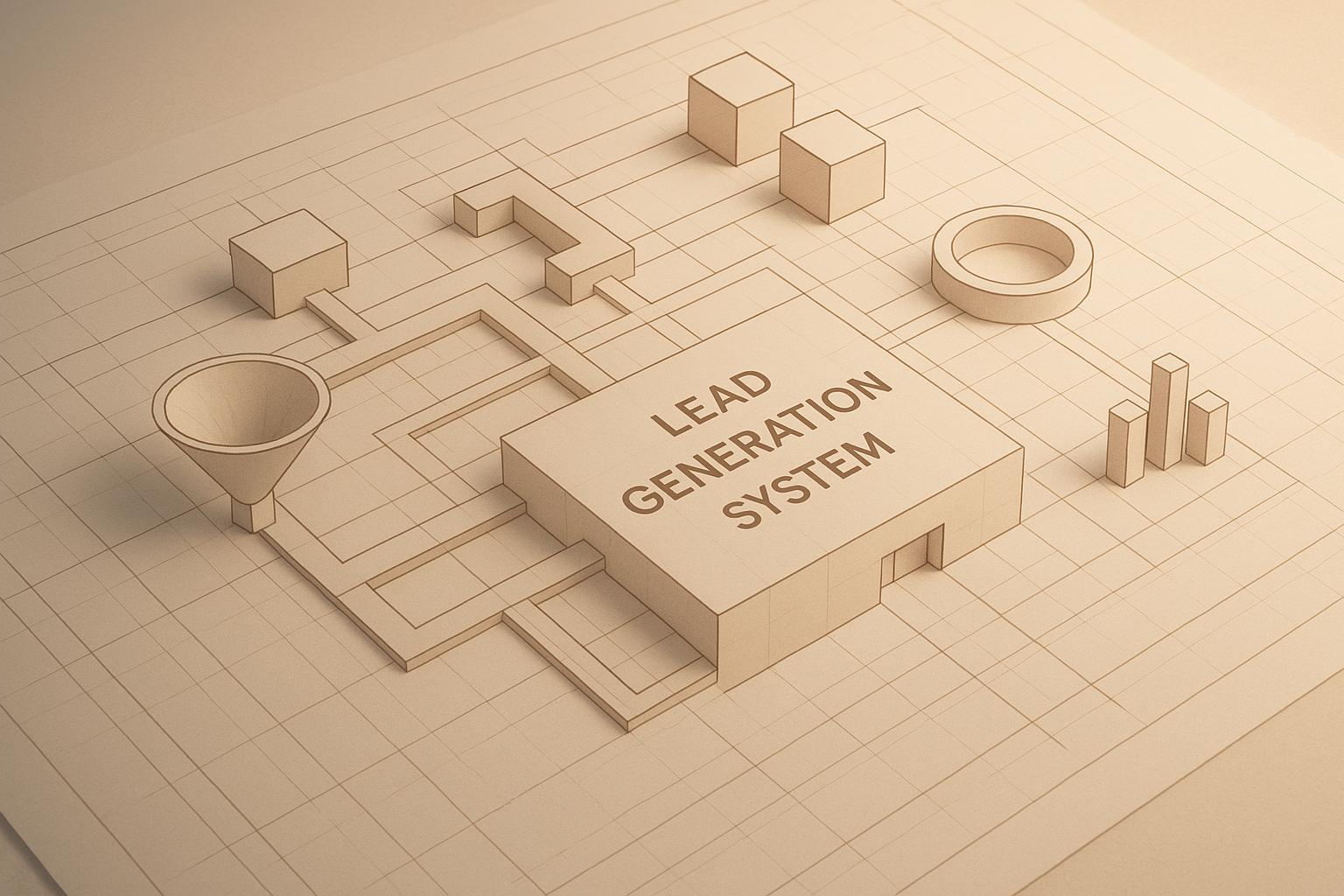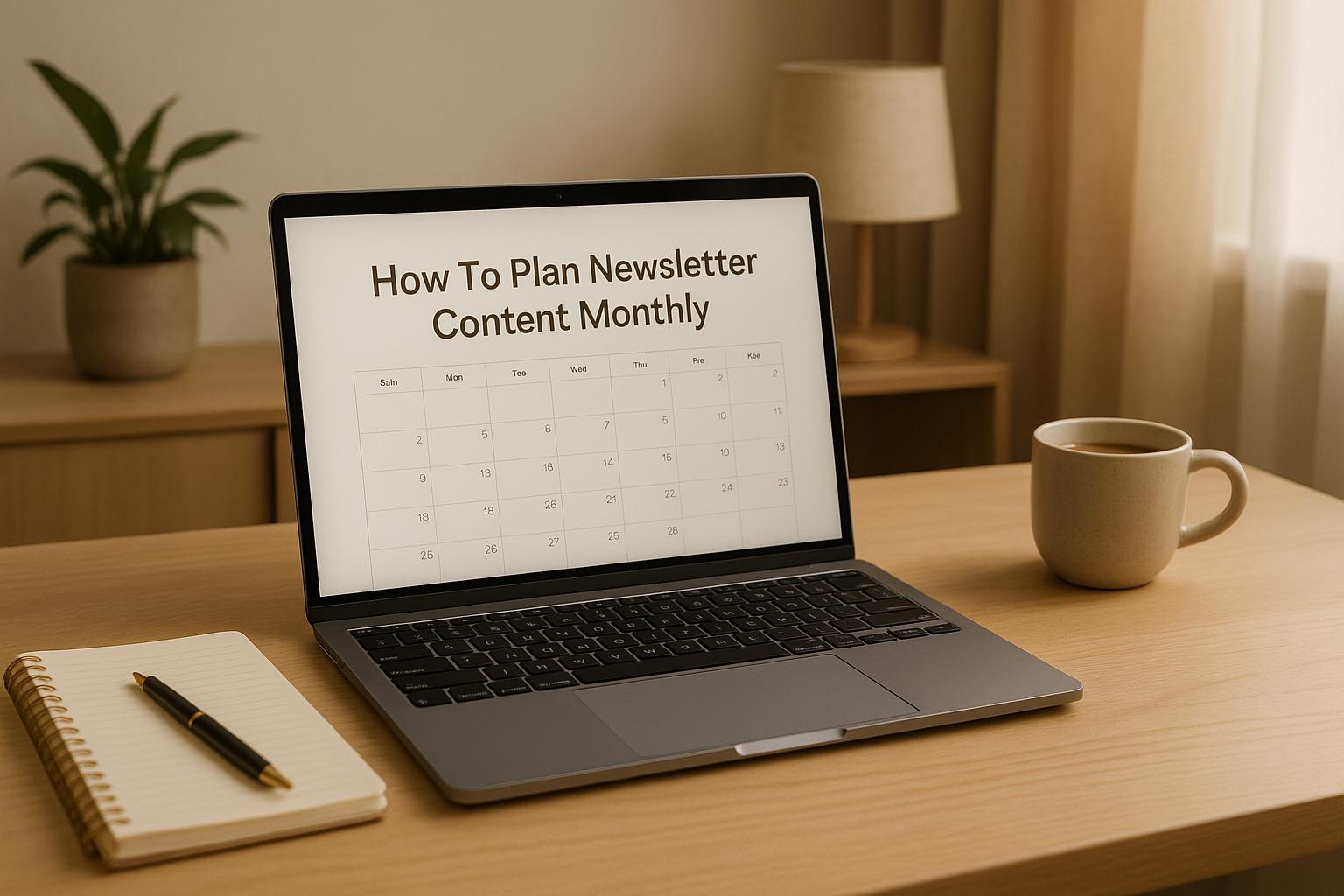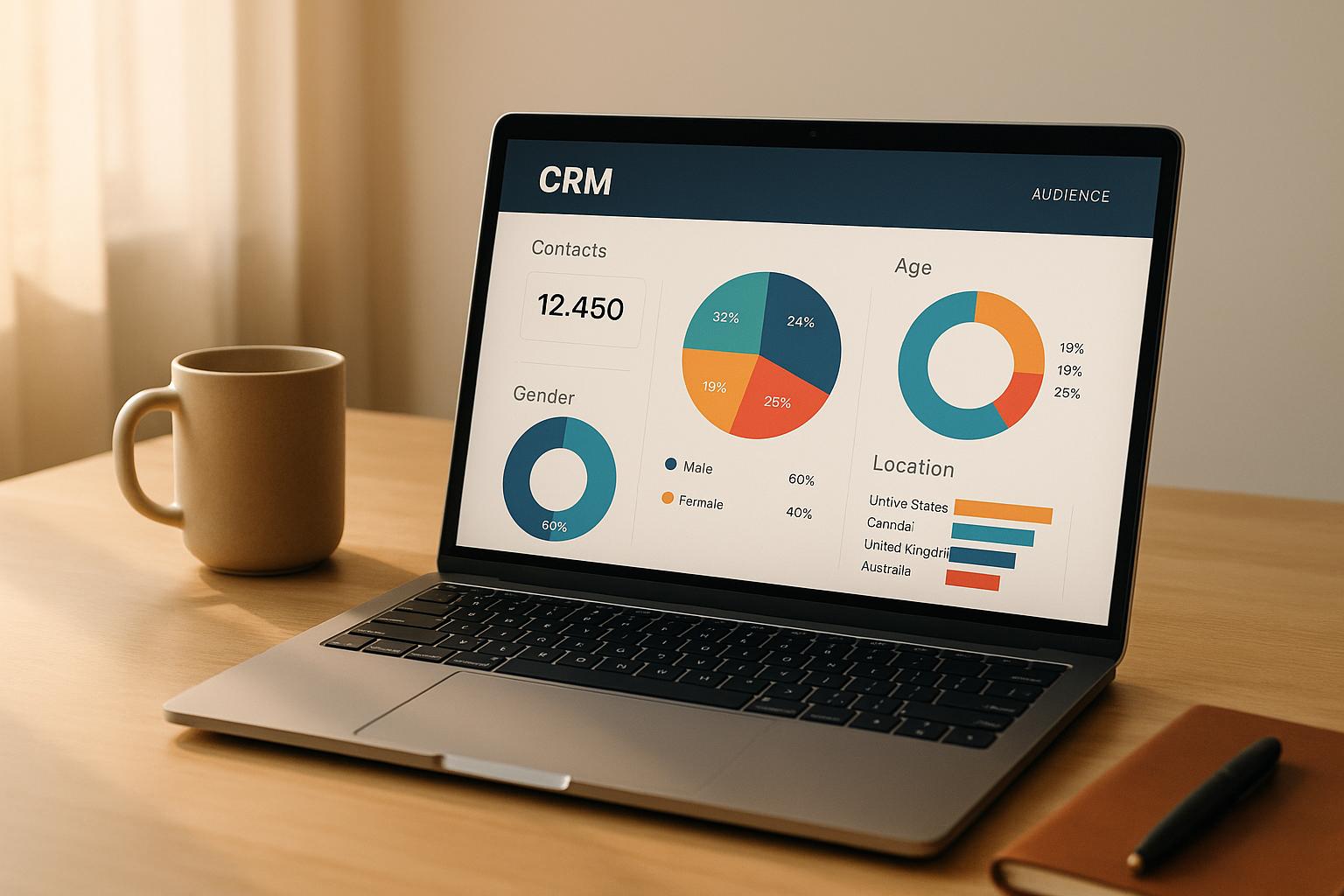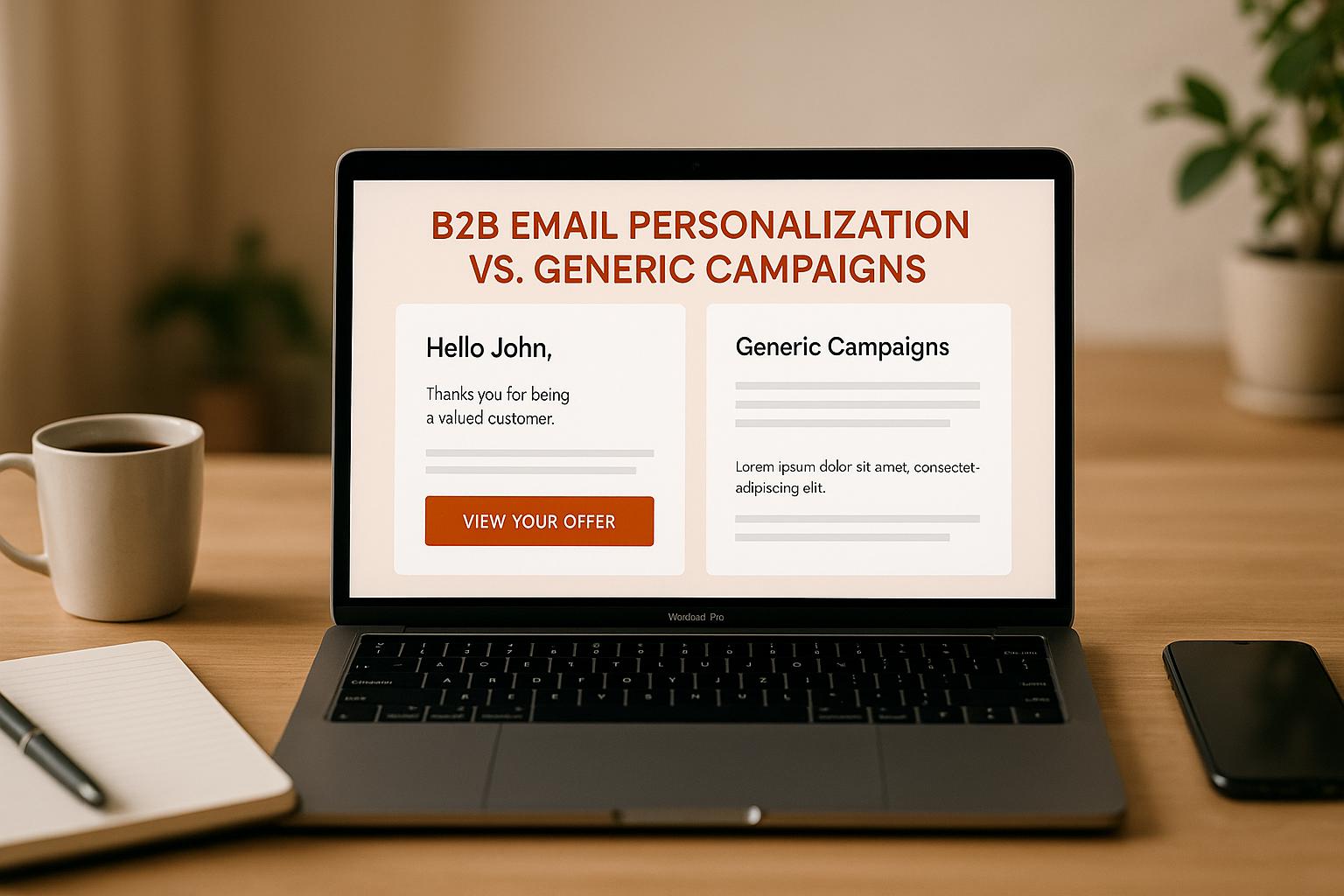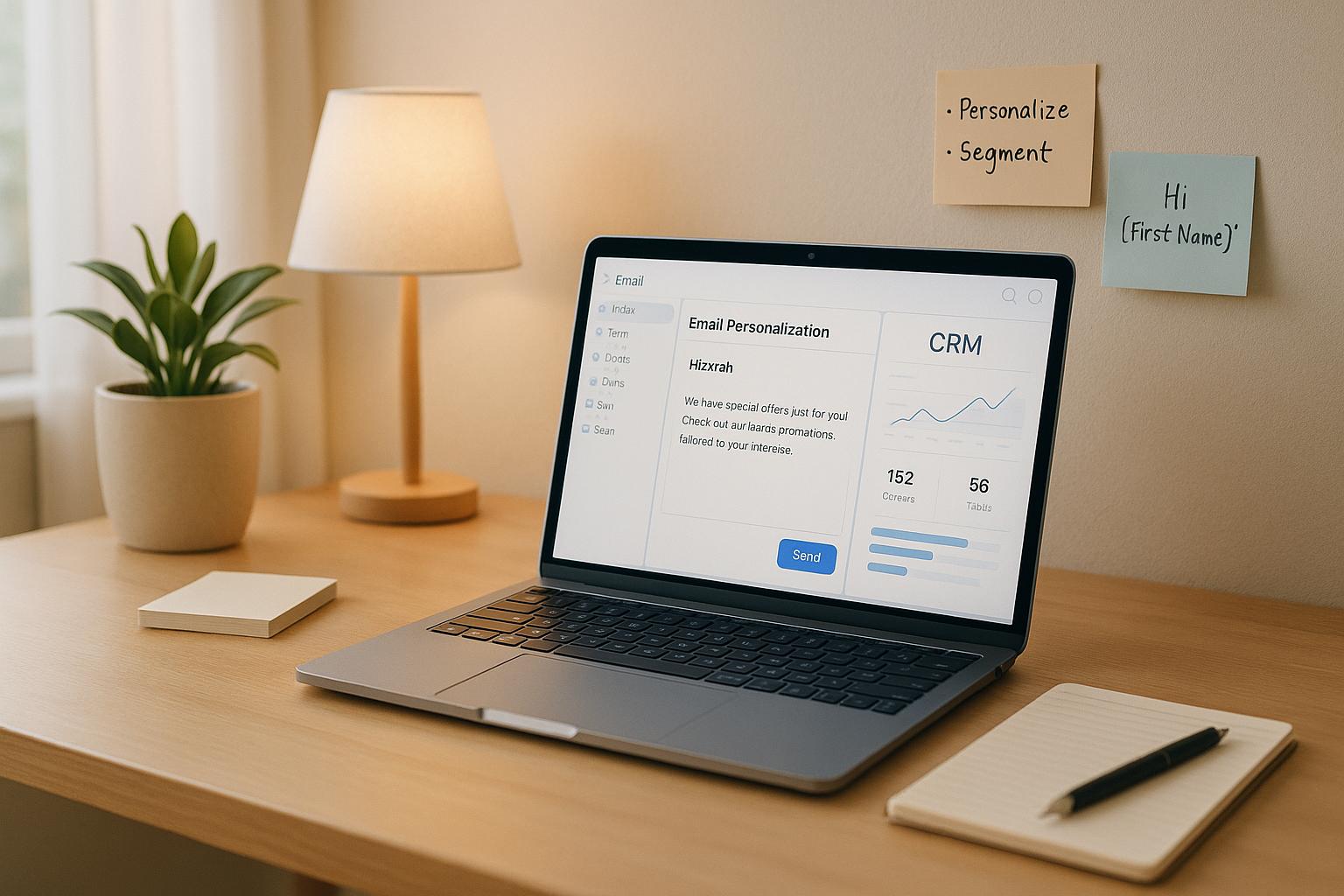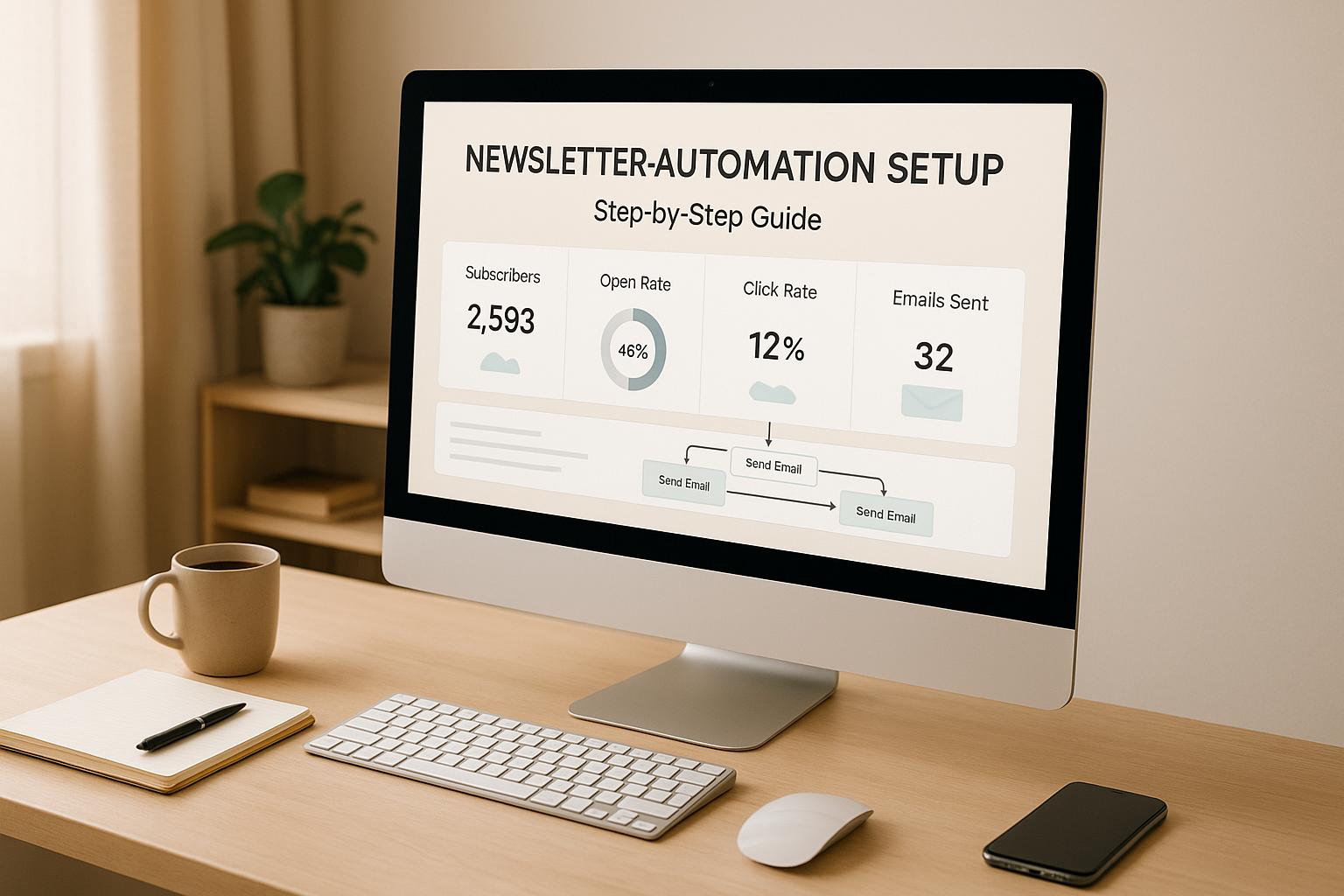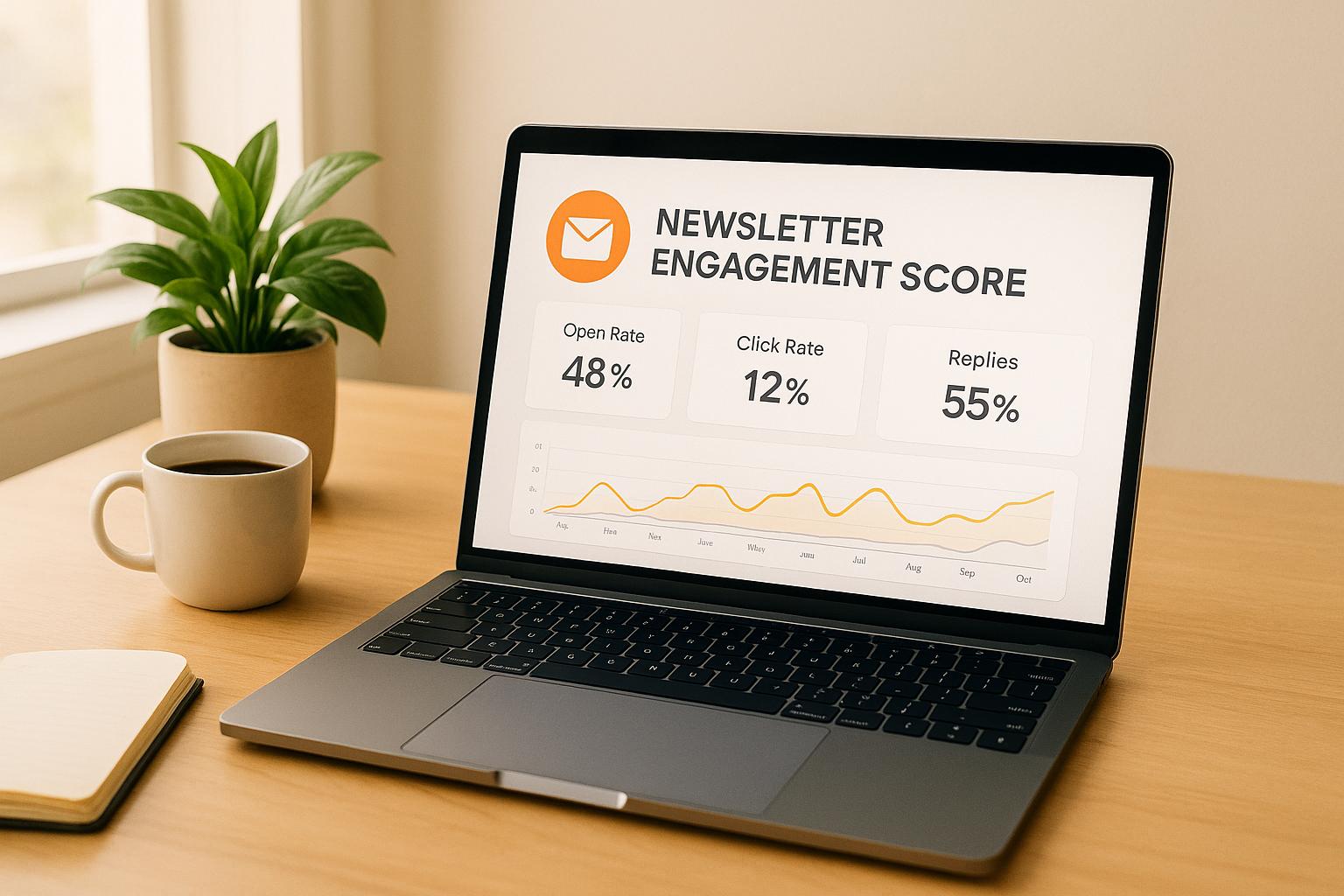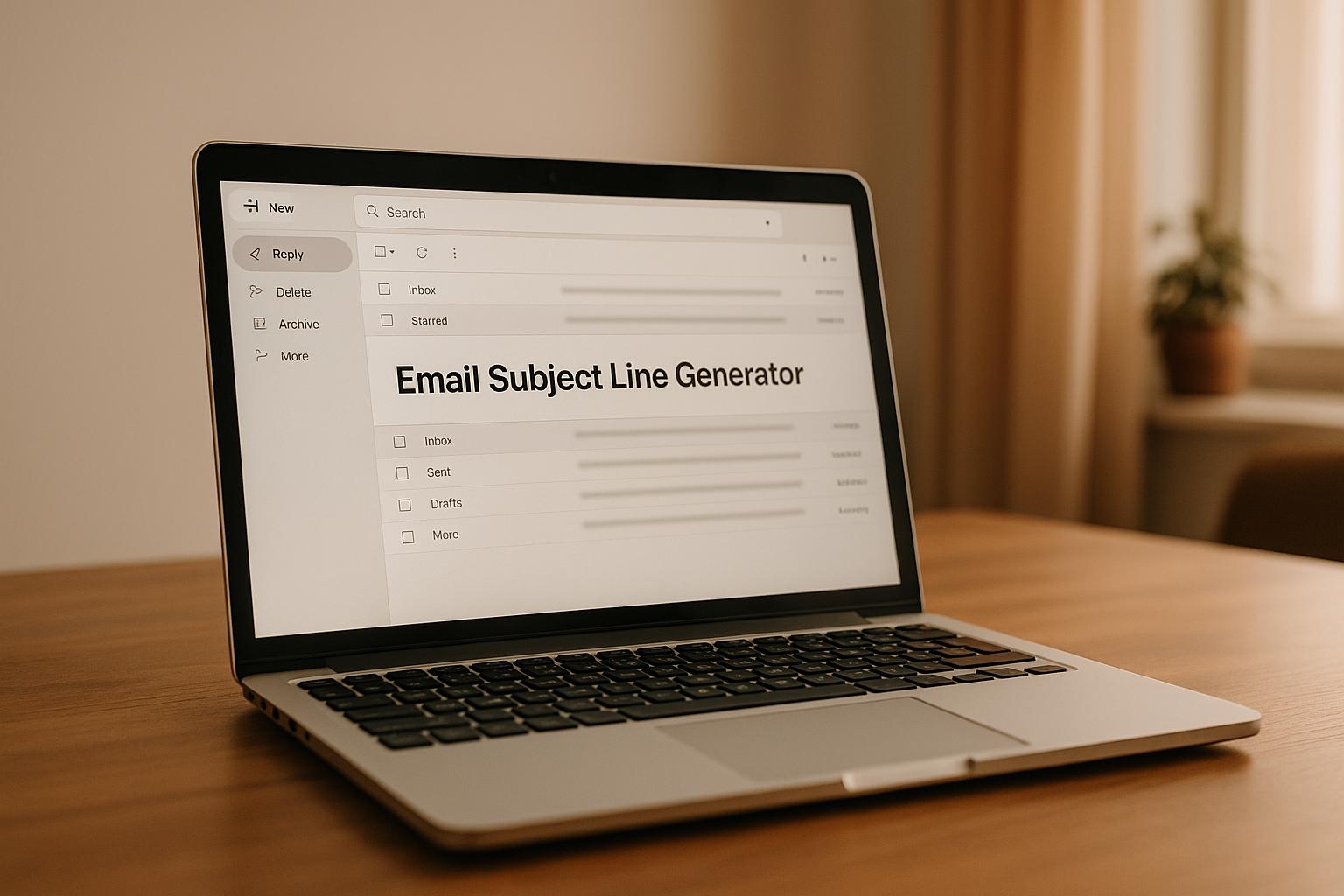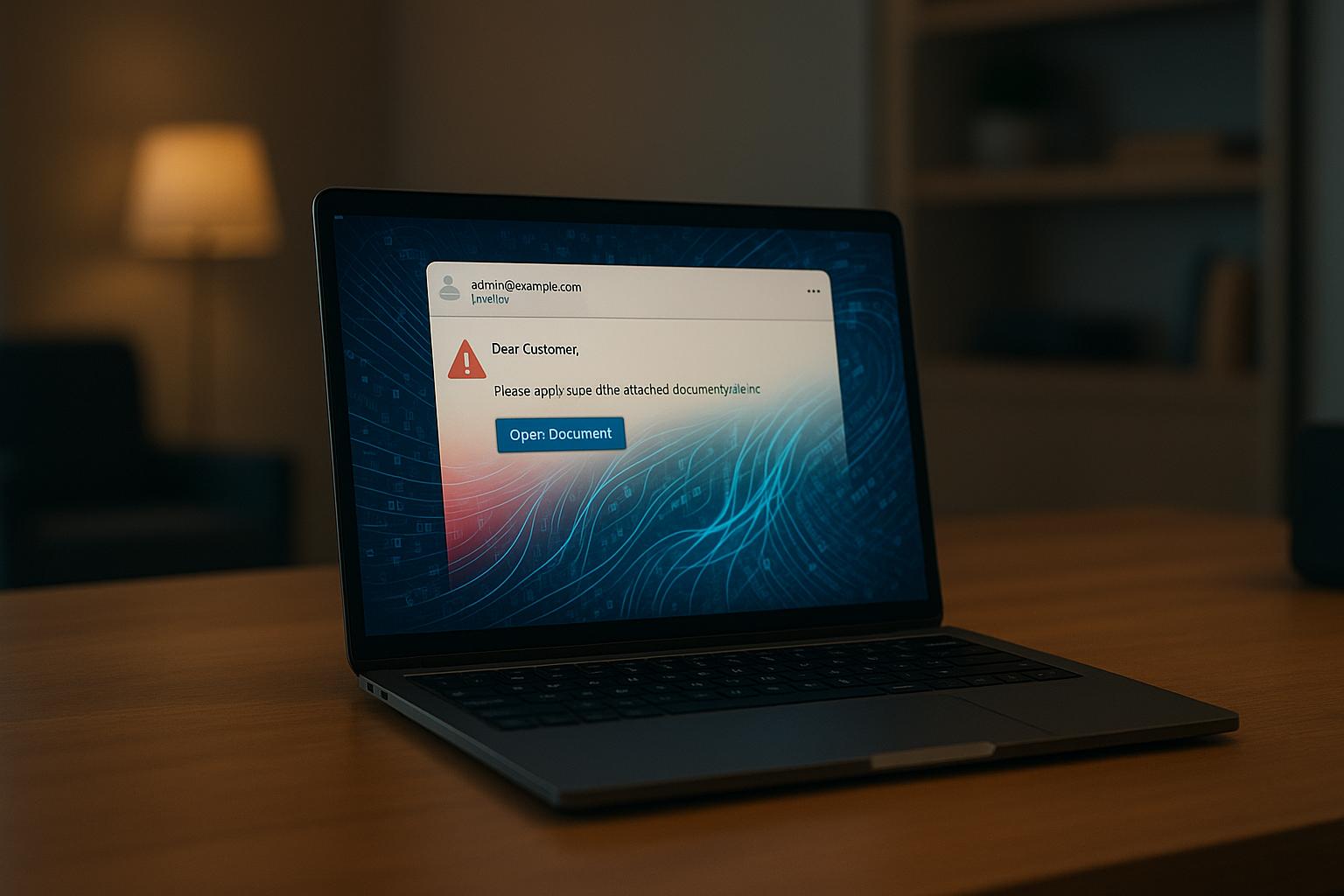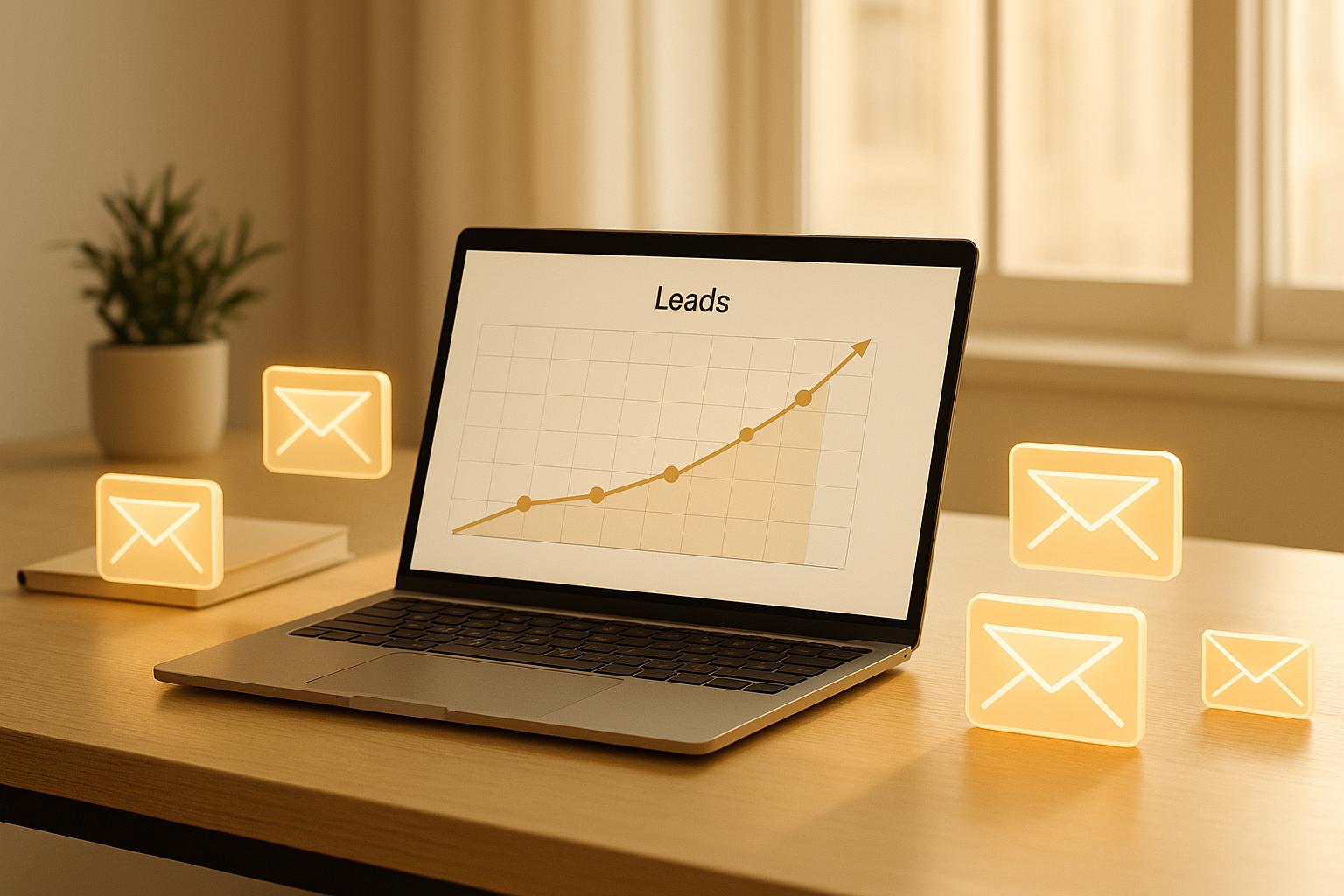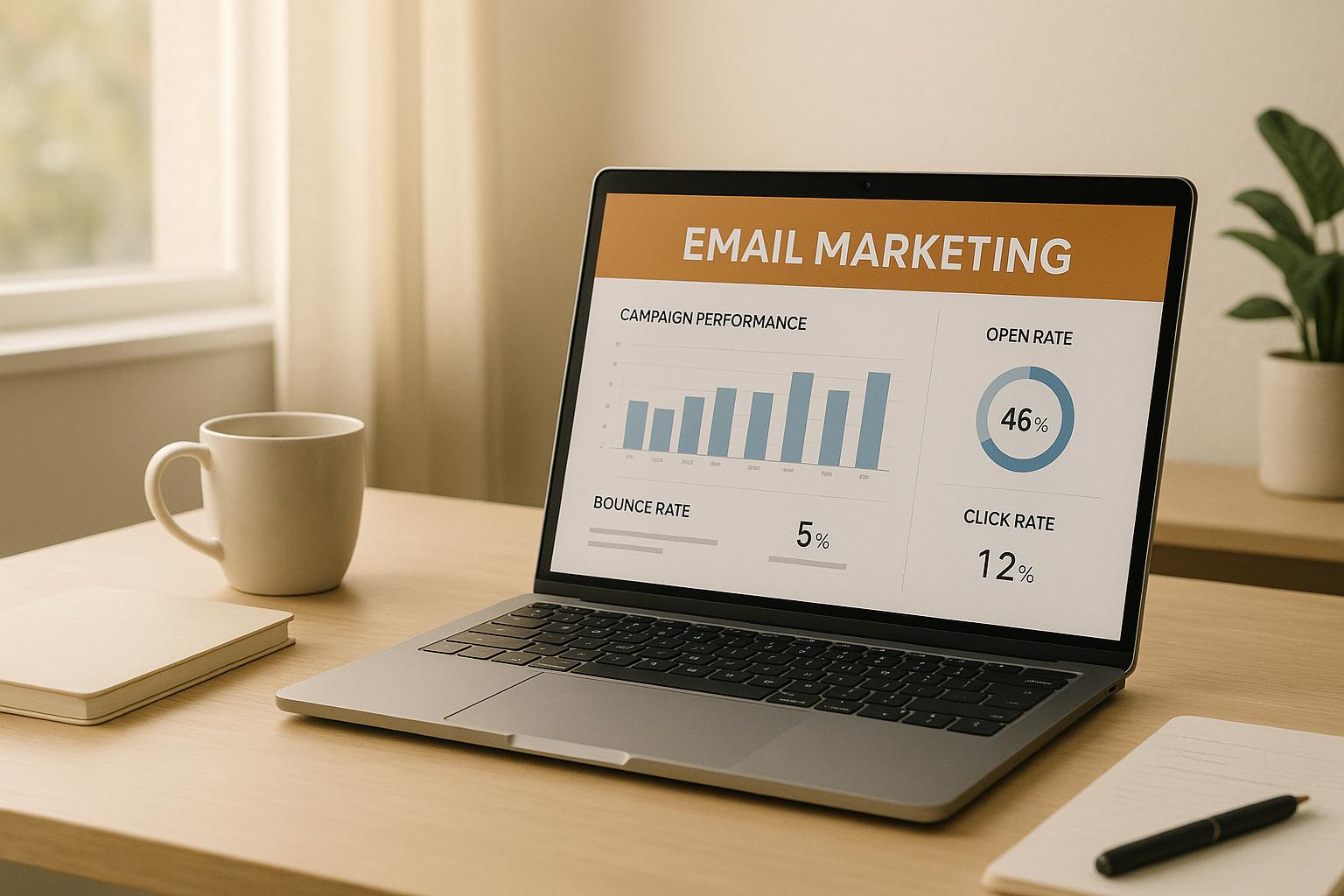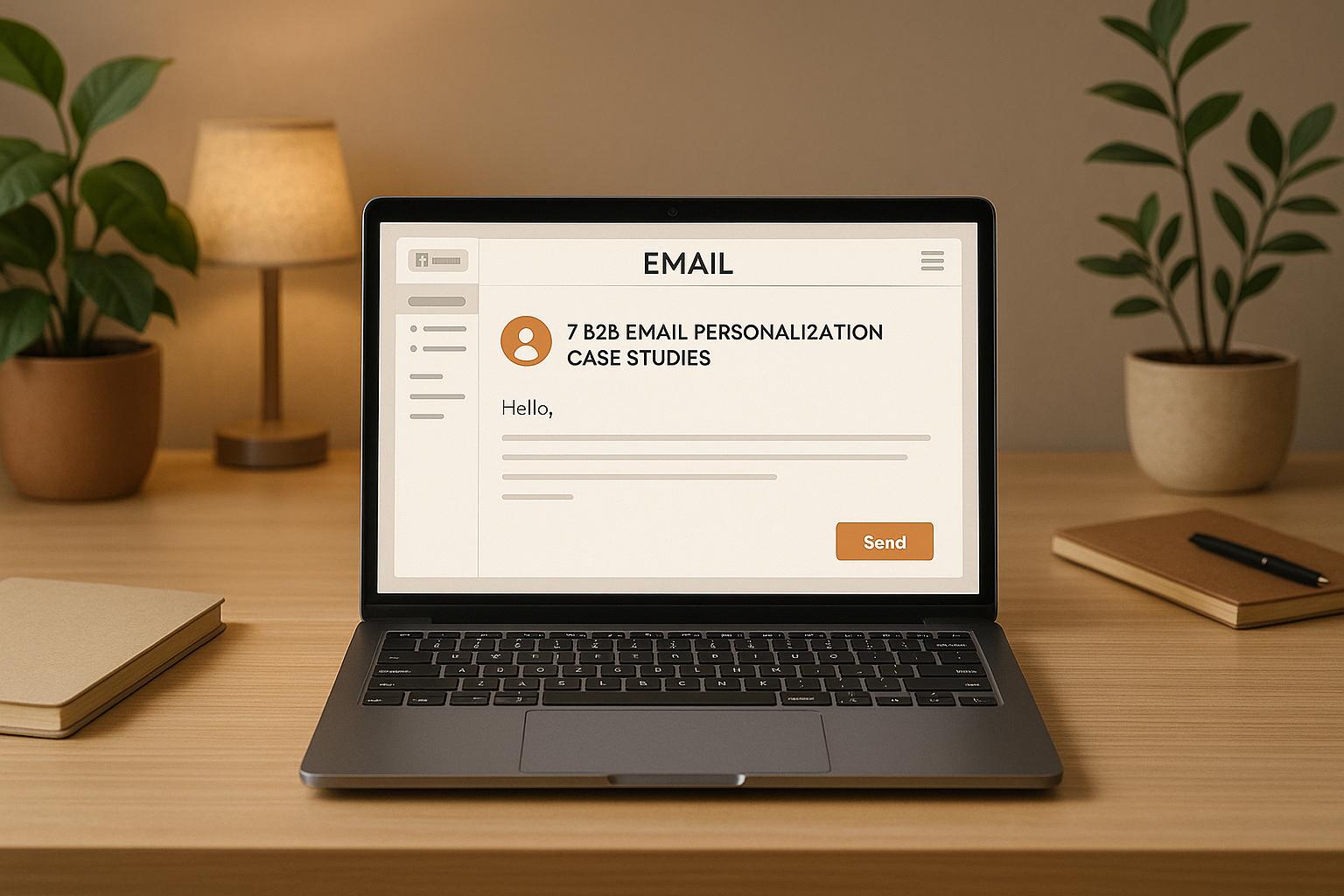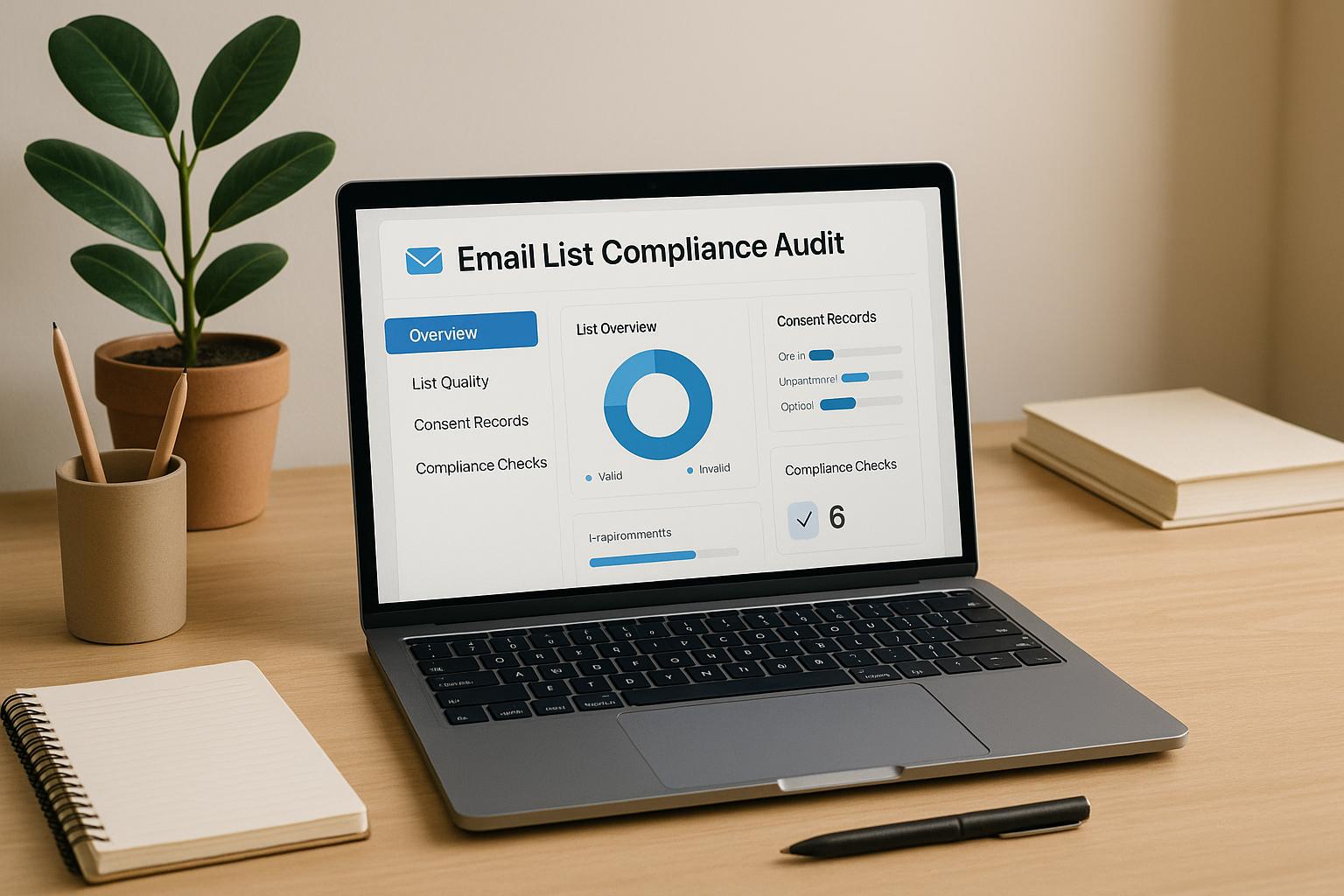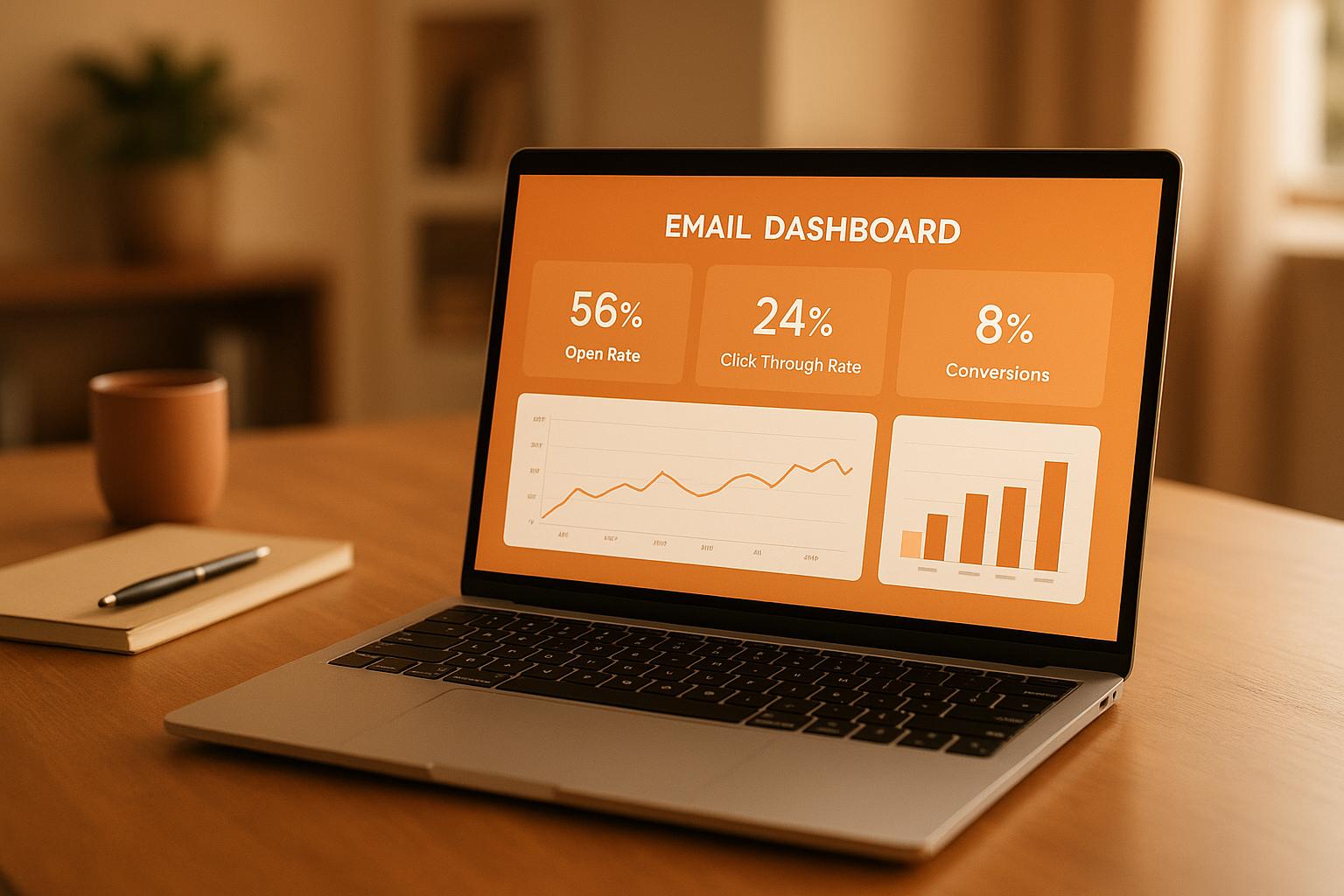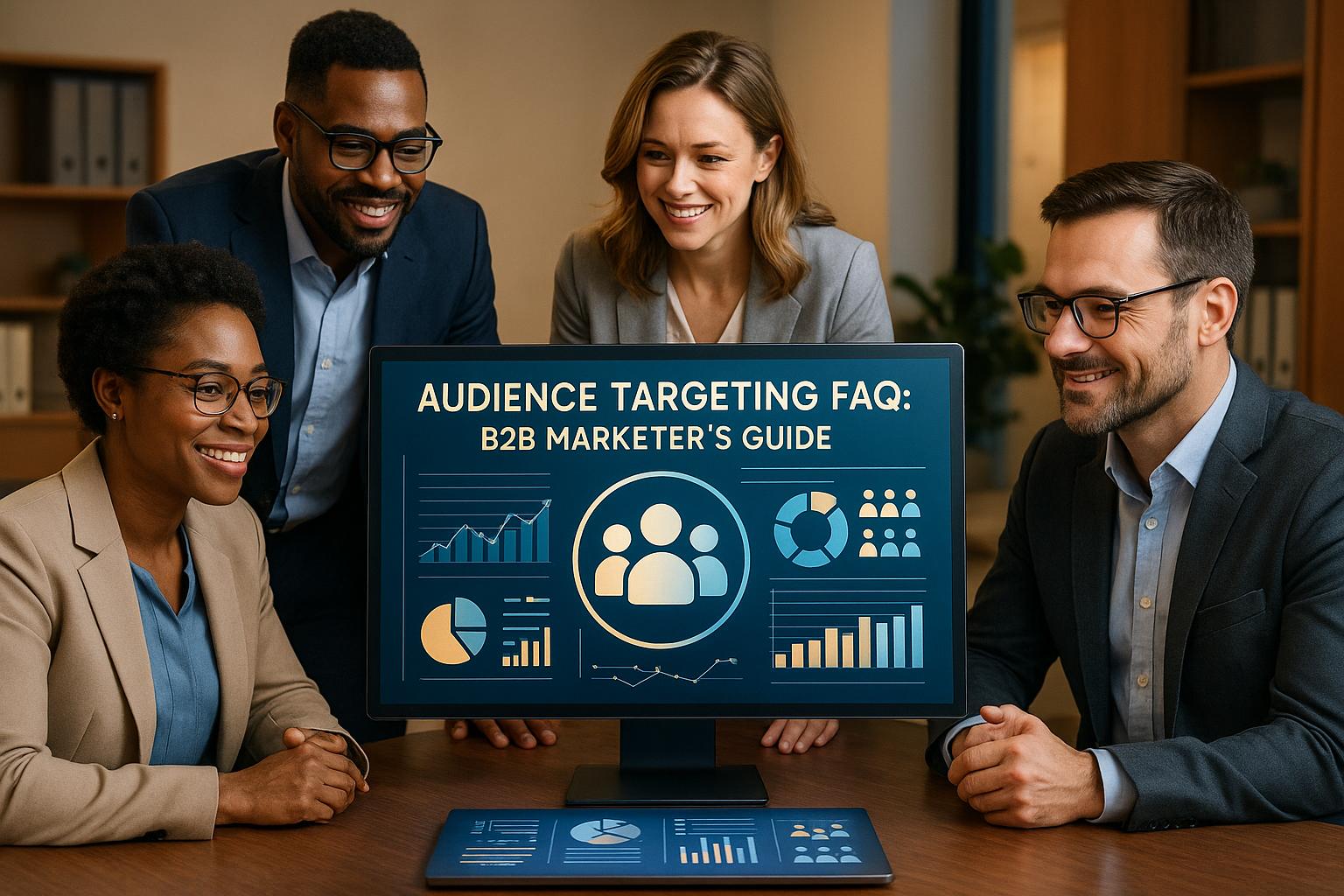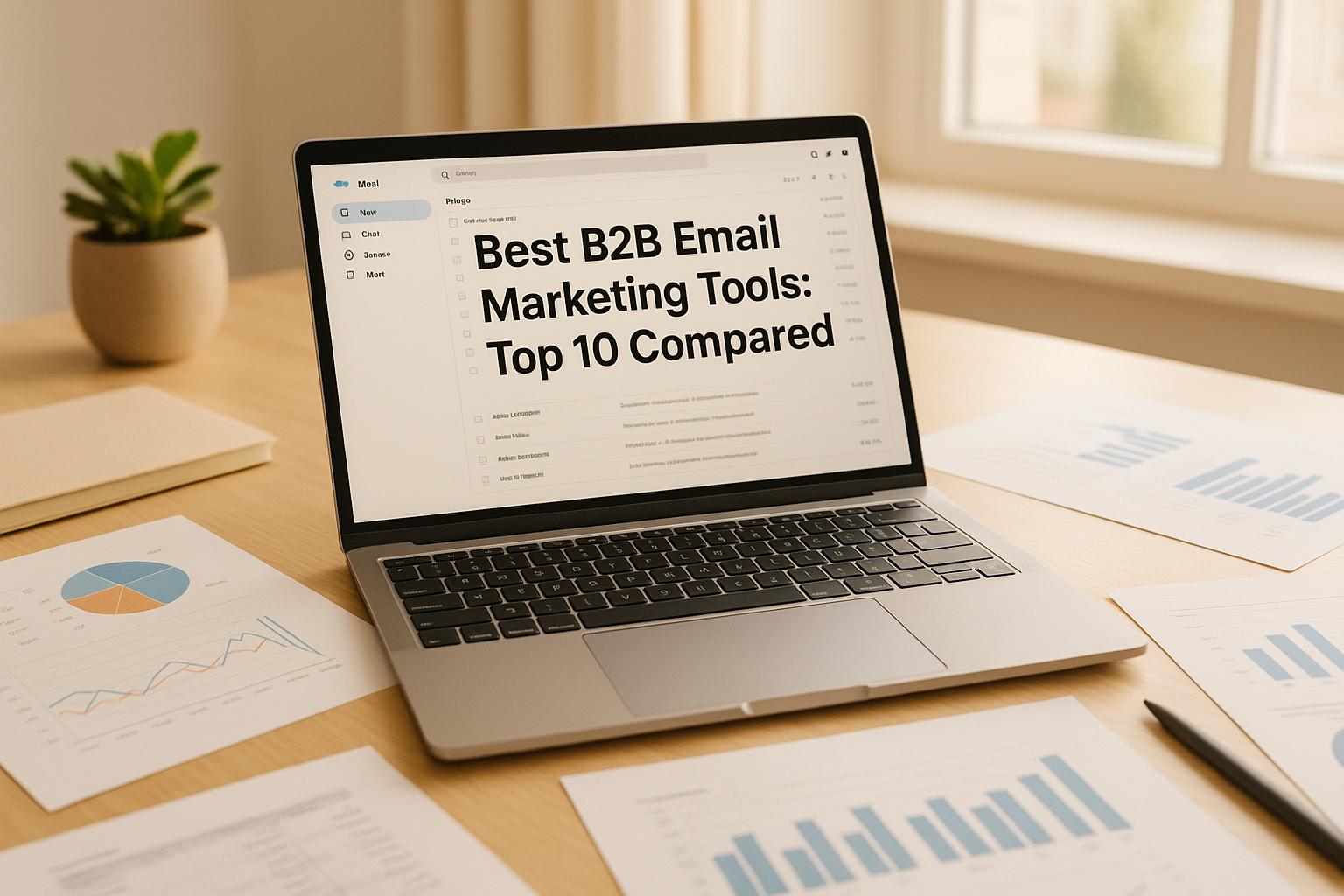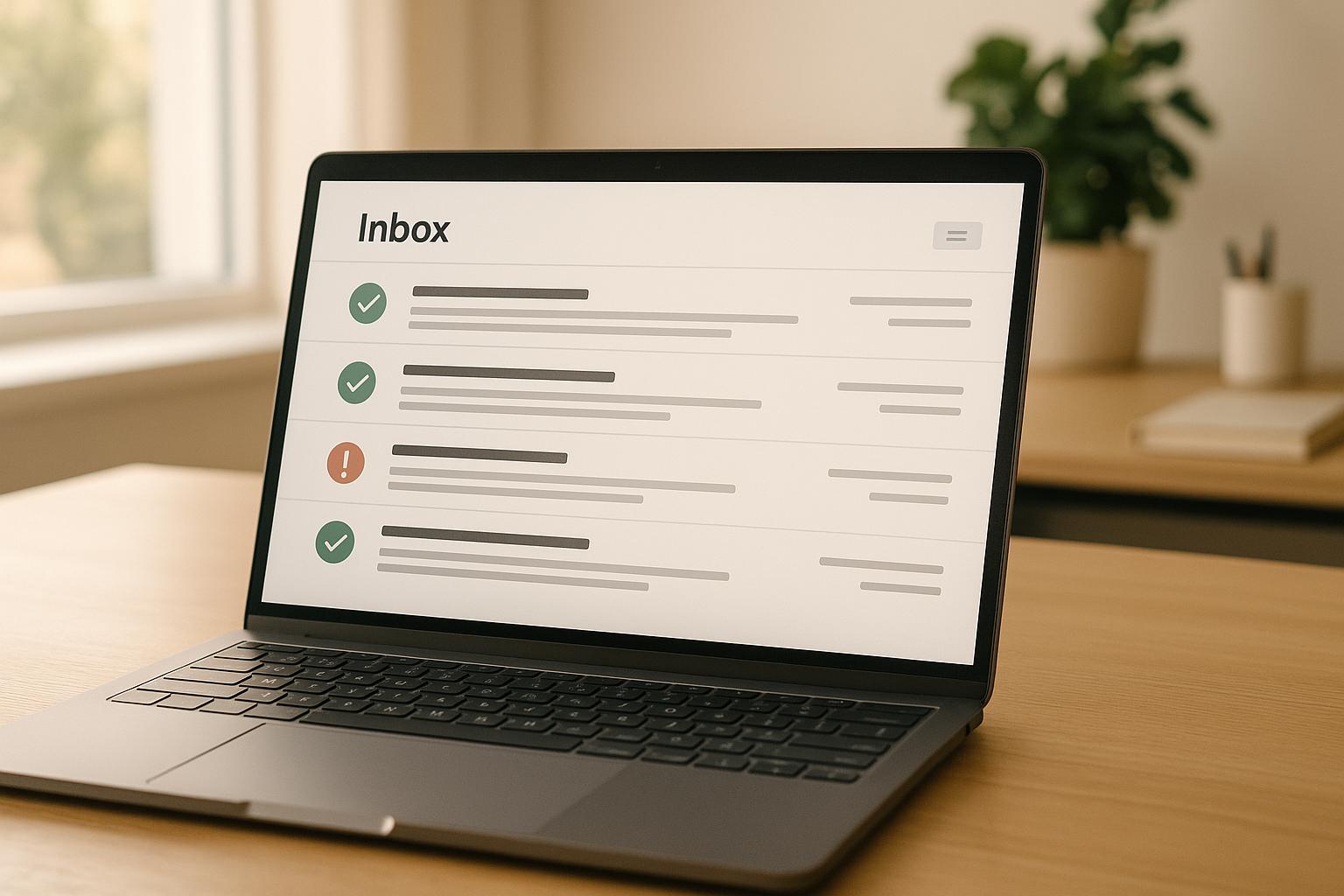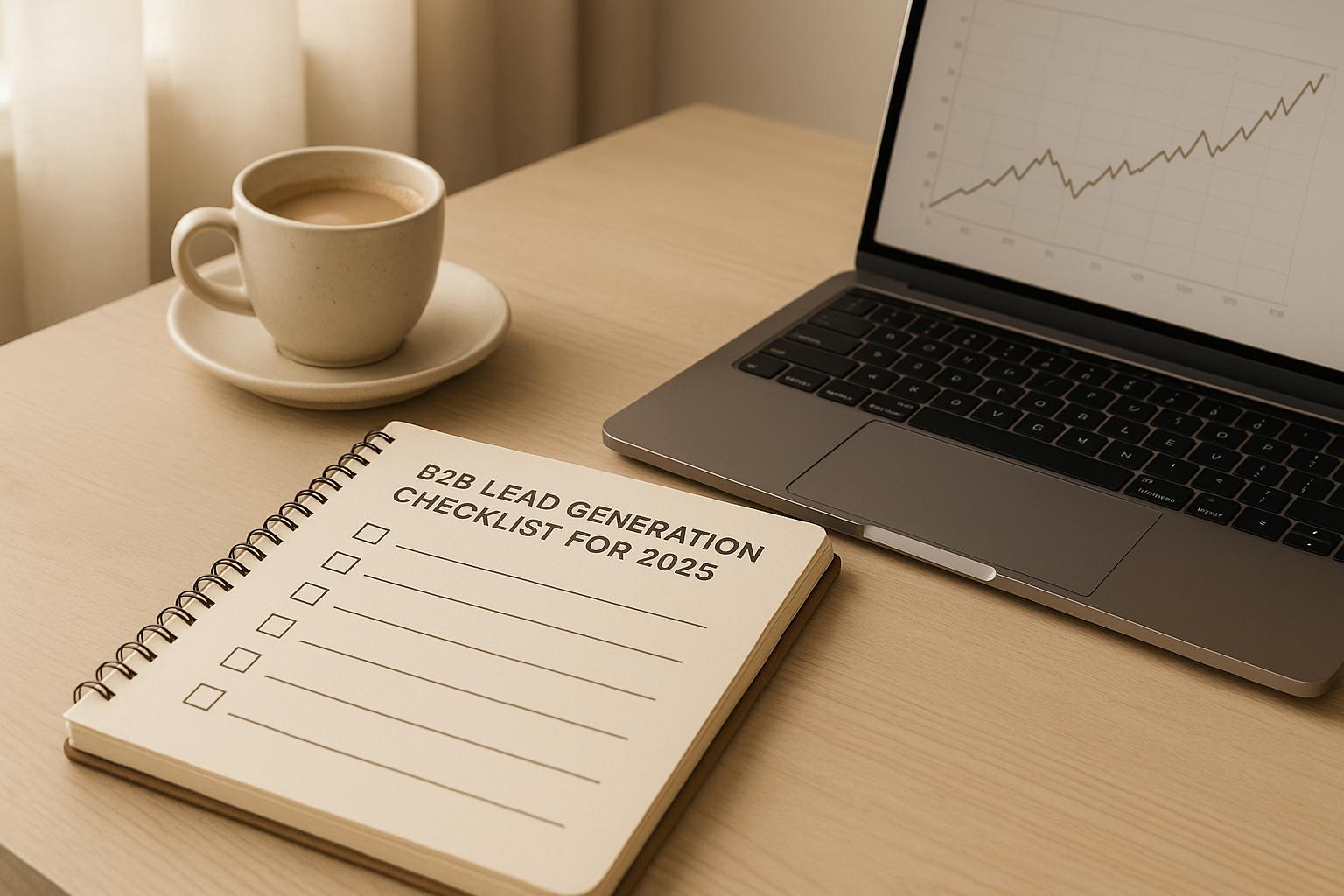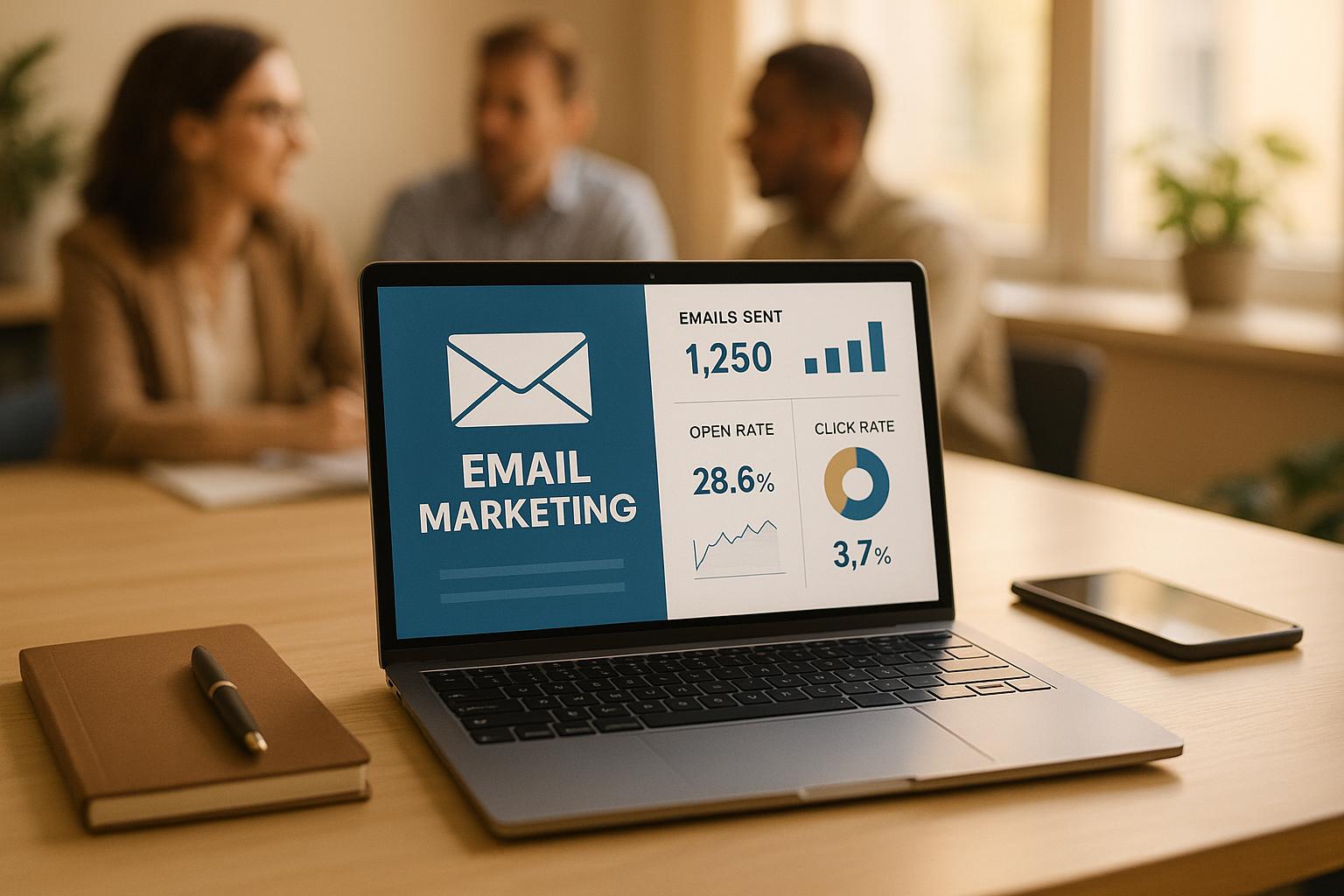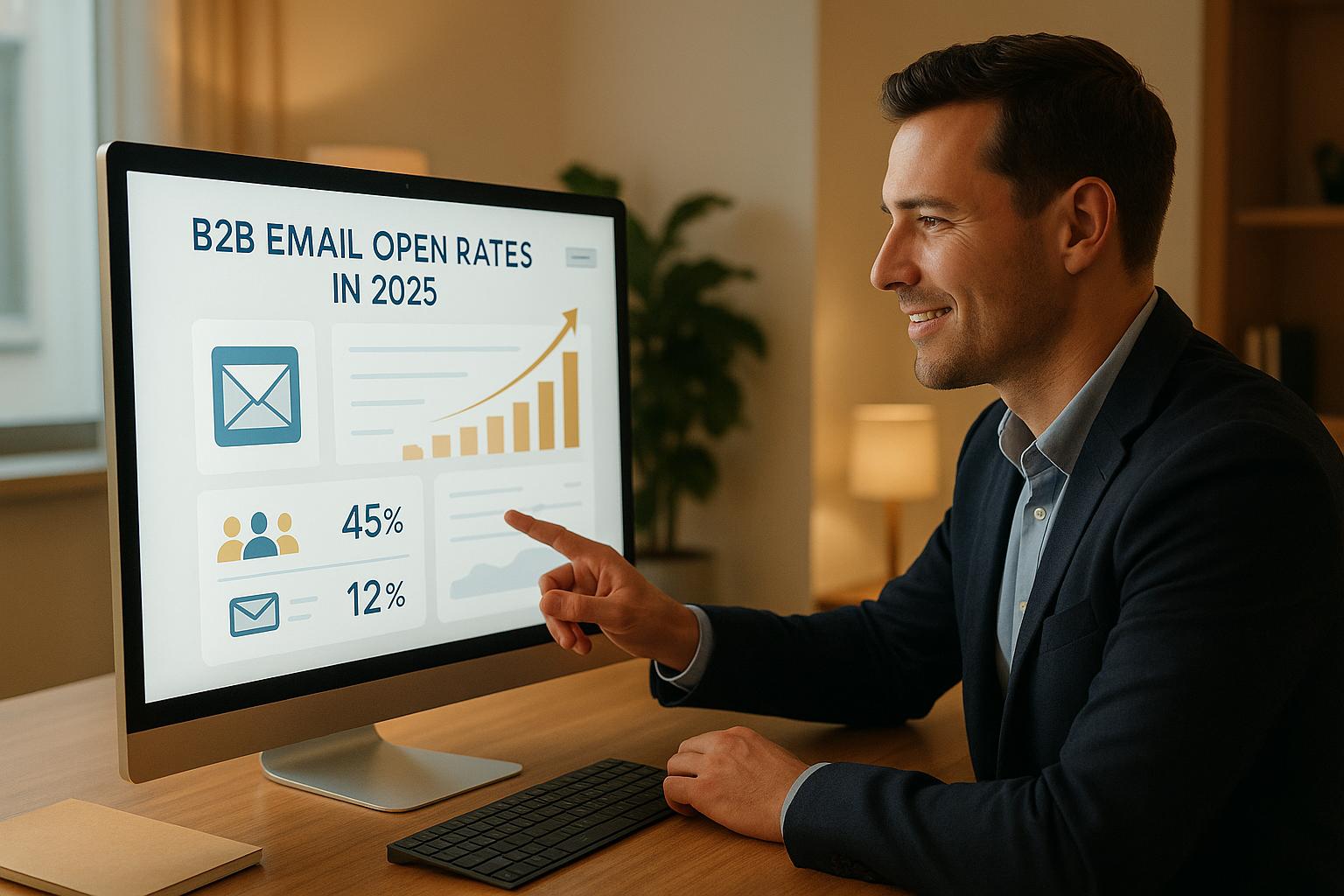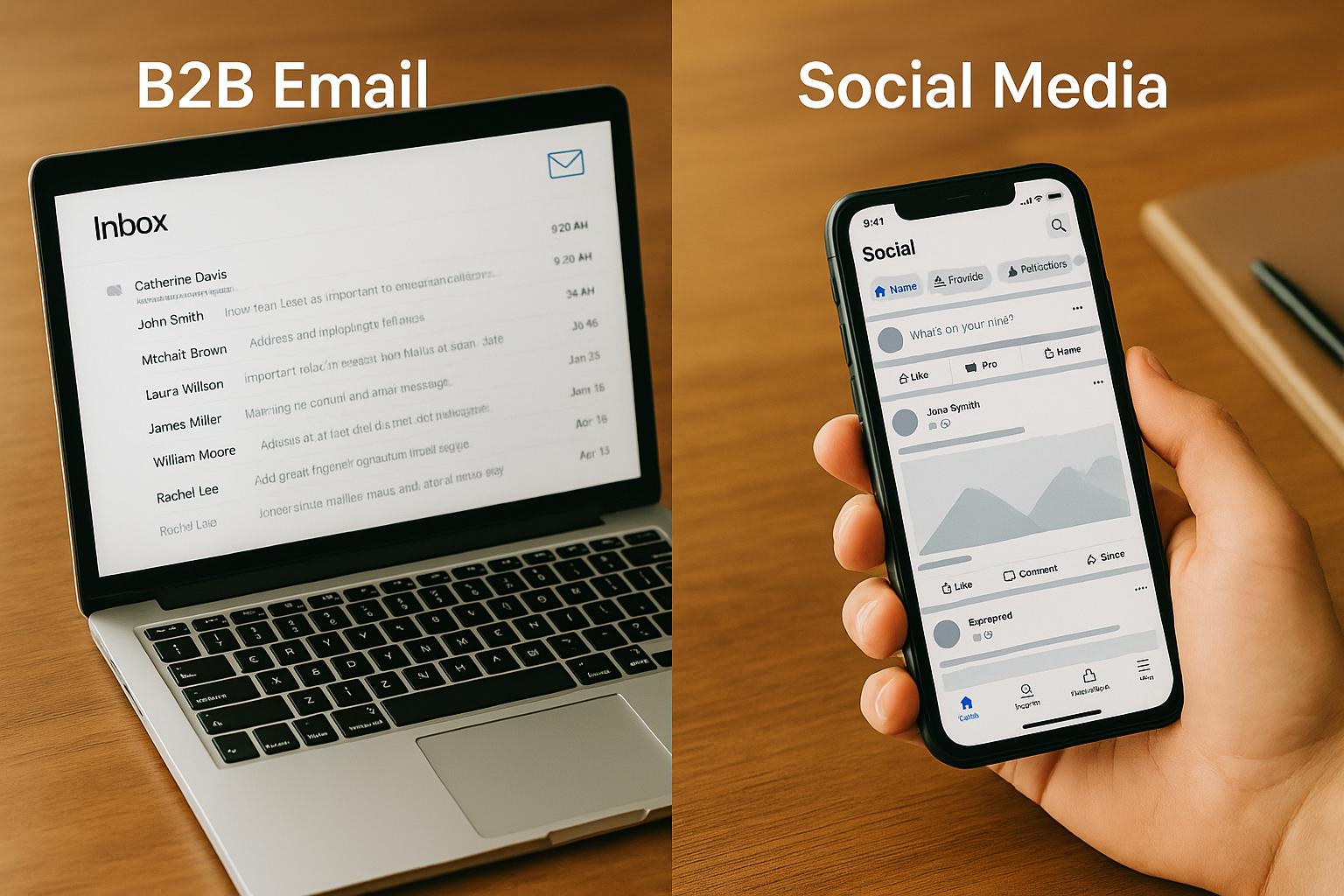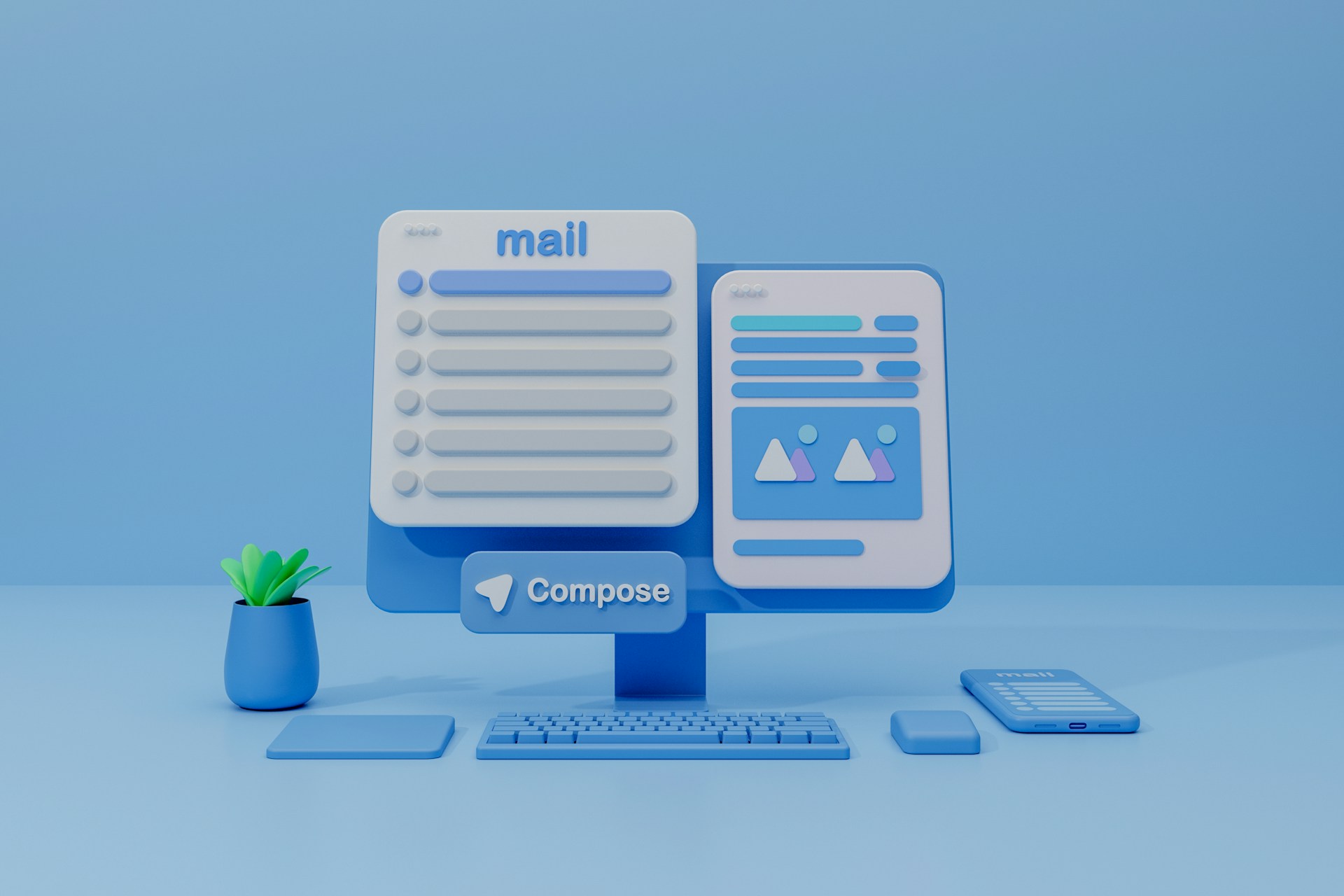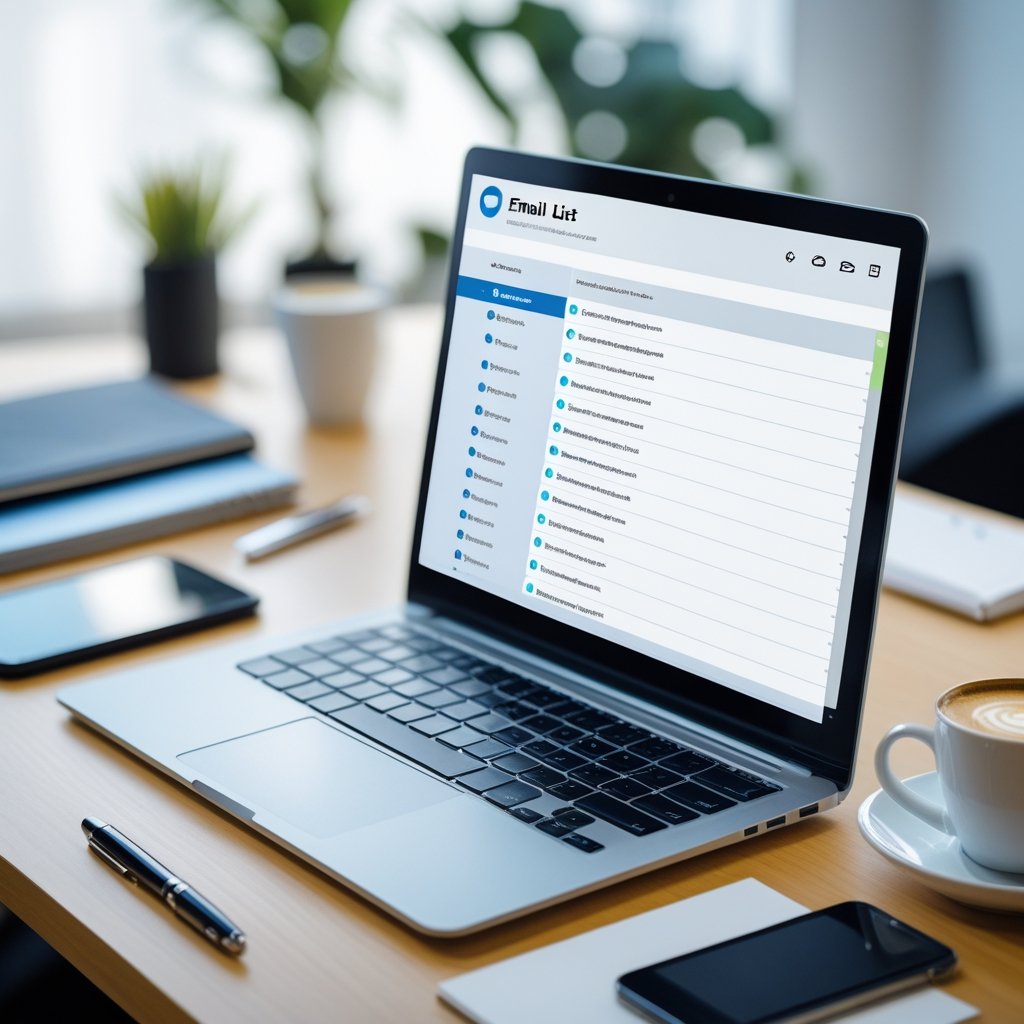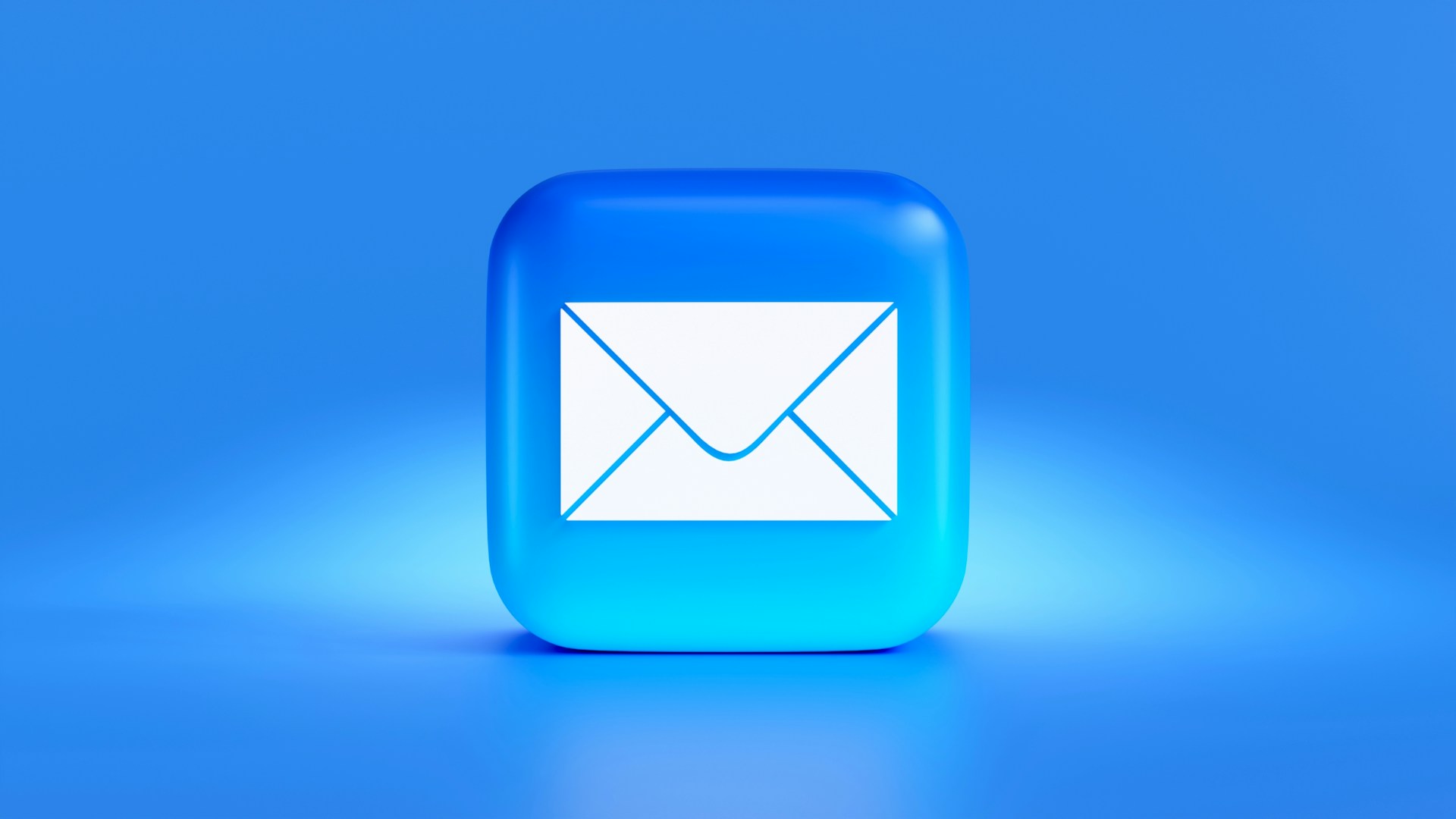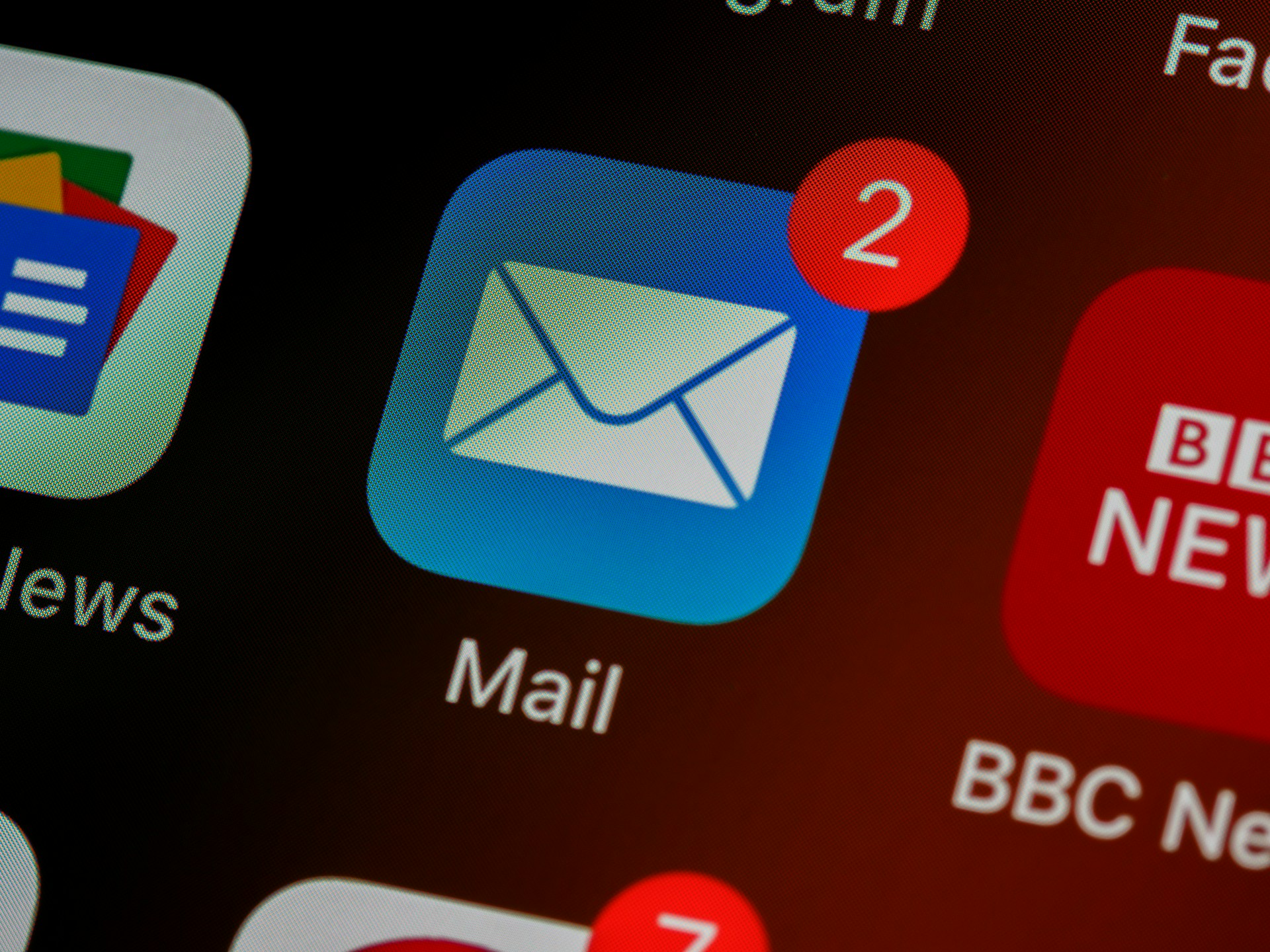Key Metrics for B2B Email Campaign ROI
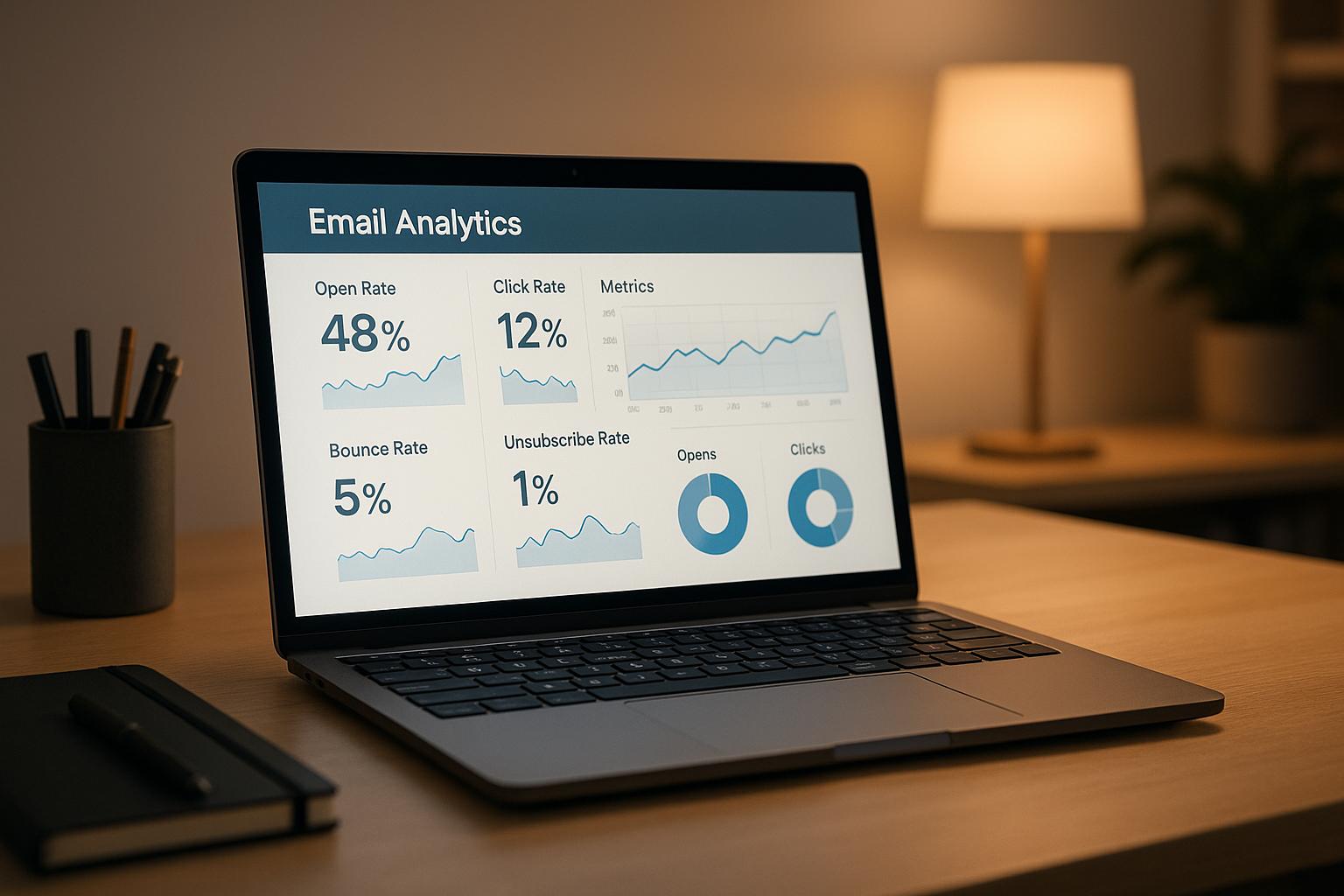
Email marketing can be a powerful revenue driver for B2B companies, but tracking the right metrics is essential to measure success. ROI (Return on Investment) is the most important metric, showing how much revenue your campaigns generate compared to their costs. This includes expenses like platform fees, design, content creation, and staff time. In B2B, where sales cycles are longer and involve multiple touchpoints, ROI helps identify which campaigns contribute to revenue growth.
Key metrics to monitor include:
- Conversion Rate: Measures how many recipients take action, like signing up for a demo or making a purchase.
- Open Rate & Click-Through Rate (CTR): Indicate initial engagement with your emails.
- Bounce Rate & Unsubscribe Rate: Reflect list health and deliverability.
- Revenue Attribution: Tracks how much revenue each email generates, factoring in complex B2B sales funnels.
To improve ROI, focus on segmentation, personalization, automation, A/B testing, and syncing email data with your CRM. Inbound campaigns often perform better for engagement, while outbound campaigns expand reach. Combining both can maximize results.
The goal? Use data to refine strategies, allocate resources effectively, and drive measurable revenue growth.
B2B Email Marketing Benchmarks and How to Use Them–Chad S. White
Core Metrics for Measuring B2B Email Campaign ROI
ROI gives you the big picture of your email campaign's success, but to really understand what’s driving performance (and what’s not), you need to dig into specific metrics. These key indicators reveal how well your emails are engaging your audience and pinpoint areas that could use some fine-tuning.
Conversion Rate
The conversion rate tells you the percentage of email recipients who take a specific action - whether that's downloading a report, signing up for a demo, or completing a purchase. It's a critical metric because it directly ties email engagement to business results. Conversion rates can vary depending on your industry and the type of campaign you're running. To boost this metric, make sure your email content aligns seamlessly with your landing page and includes a clear, compelling call-to-action.
Open Rate and Click-Through Rate (CTR)
Open rate measures how many recipients actually open your email, while click-through rate (CTR) tracks the percentage of people clicking on links within the email. These two metrics act as the first indicators of how your campaign is performing. Open rates are influenced by factors like your sender reputation, subject line appeal, and the timing of your email. Use a trusted sender name and craft subject lines that grab attention while staying relevant.
CTR, on the other hand, shows how engaging your email content is. Personalization and well-placed, easy-to-spot CTAs can significantly improve this metric. Together, these metrics give you an early sense of whether your campaign is on the right track toward driving conversions.
Bounce Rate and Unsubscribe Rate
Bounce rate measures how many emails fail to reach recipients, while the unsubscribe rate tracks how many people opt out of your mailing list. Both impact your email list’s health and your overall deliverability. Hard bounces, caused by permanent issues like invalid email addresses, should be removed from your list immediately. Soft bounces, which are due to temporary issues, can be monitored and addressed later.
An increase in unsubscribe rates can signal problems with your email content or sending frequency. To keep your list healthy, use practices like double opt-ins and provide subscribers with preference options, so they can choose the type and frequency of emails they receive. These metrics are crucial for maintaining strong deliverability and ensuring your campaigns stay effective.
Revenue Attribution
Revenue attribution connects your email campaigns directly to sales, making it an essential piece of the ROI puzzle. In B2B, this can get tricky due to long sales cycles and multiple touchpoints. A potential customer might interact with several emails - reading a newsletter, downloading resources, or attending a webinar - before making a purchase. Attribution models help you understand the role each email plays in the overall sales process.
Whether you use a first-touch, last-touch, or multi-touch approach, effective attribution requires robust tracking. Integrating email engagement data with your CRM and sales tools is key. Marketing automation platforms like Breaker can simplify this process by providing real-time analytics that show exactly how your email campaigns contribute to pipeline growth and closed deals. Tracking both direct and influenced revenue gives you a complete picture of your campaign’s impact.
2025 Industry Benchmarks for B2B Email Campaigns
Knowing how your email campaigns stack up against industry standards can help you set achievable goals and uncover areas for improvement. B2B email performance varies widely across industries, with each sector facing its own unique challenges and opportunities.
Performance Averages by Industry
When comparing metrics across industries, benchmarks provide valuable context. For example, technology and SaaS sectors often lead in engagement and ROI, thanks to their use of advanced segmentation techniques. On the other hand, professional services tend to see lower engagement rates, as their longer sales cycles delay revenue recognition.
Manufacturing companies typically achieve strong conversions once their audience engages, while financial services campaigns perform well despite strict regulations limiting personalization. In the healthcare and pharmaceutical sectors, compliance requirements make educational content particularly effective, highlighting the importance of tailored messaging.
How to Use Benchmarks for Campaign Planning
Think of benchmarks as a reference point. If your open rates are falling short of industry averages, it might be time to revisit your sender reputation or experiment with more compelling subject lines. Struggling with click-through rates? That could be a sign to rework your email design or rethink how you present your call-to-action. If conversion rates are lower than expected, there may be a mismatch between your email content and the experience on your landing page - underscoring the need for consistent messaging throughout the customer journey.
To maximize ROI, take a step back and evaluate your email program as a whole. Segmenting your audience into clear, targeted groups and syncing your email data with your CRM can give you a better understanding of long-term customer value, beyond just immediate campaign results. Keep in mind that benchmarks represent averages across many campaigns, and seasonal trends can also influence performance. Adjust your approach as needed throughout the year.
Finally, the quality of your email list is critical. Building an organic, engaged list will help you meet or even exceed benchmark expectations. Using tools with real-time analytics, like Breaker, can make it easier to track your performance and refine your strategy for better results.
sbb-itb-8889418
Methods to Maximize ROI in B2B Email Campaigns
Boosting ROI in B2B email campaigns requires a mix of precise targeting and smart, data-backed execution. The most successful marketers rely on specific strategies to drive measurable results.
Personalization and Segmentation
Effective segmentation goes well beyond basic demographics. By analyzing behavioral data, purchase history, and engagement trends, marketers can fine-tune their messaging to resonate with specific audience segments. For instance, understanding where a contact stands in the sales funnel is critical. New leads might benefit from educational content that builds trust, while loyal customers may respond better to updates about new features or opportunities for growth. Even geographic segmentation can play a big role, as business priorities often vary by region.
Dynamic content takes personalization to the next level. A single email template can adapt automatically based on recipient data, ensuring every message feels relevant without adding to production time. Progressive profiling, which gathers more data with each interaction, allows for increasingly targeted follow-ups. This tailored approach also sets the stage for automation strategies that streamline campaigns while maintaining a personal touch.
Using Automation and Real-Time Analytics
Automation is a game-changer for delivering well-timed, relevant messages. It simplifies lead nurturing and campaign management, making it easier to guide prospects through the buyer's journey. Automated drip campaigns, for example, deliver the right content at just the right moment, driving engagement and conversions.
Real-time analytics take this further by enabling quick adjustments to improve results. Tools like Breaker can activate triggered email sequences based on specific actions - like downloading a whitepaper, visiting a pricing page, or requesting a demo. These timely responses can significantly boost engagement. Lead scoring systems add another layer of efficiency, helping sales teams focus on high-priority prospects. By syncing email engagement data with your CRM, you ensure that sales reps have the context they need to close deals faster.
A/B Testing and Campaign Optimization
A/B testing is essential for figuring out what works best in your campaigns. Experiment with subject lines, call-to-action placement, and send times to uncover what drives the most engagement. Even small tweaks - like rephrasing a subject line or changing the layout - can lead to noticeable improvements in open and click-through rates.
Timing is another critical factor. While mid-week mornings are often suggested as optimal, your audience might respond better at different times. Running tests over a longer period helps you gather reliable data to fine-tune your schedule. Similarly, optimizing call-to-action elements - such as button color, wording, and placement - can significantly boost click-through rates.
The key to successful A/B testing is focusing on one variable at a time. This ensures you can clearly measure the impact of each change, allowing for continuous improvement. Over time, these small but consistent adjustments can drive higher ROI and keep your campaigns on a data-driven path to success.
Inbound vs. Outbound Email Campaigns: Performance Comparison
Inbound and outbound email campaigns play distinct roles in driving B2B email ROI. Inbound campaigns focus on nurturing leads who are already familiar with your brand, while outbound campaigns target prospects who haven’t yet engaged with your business.
Industry data shows that inbound campaigns often generate stronger engagement because the recipients are already interested in your content. Outbound campaigns, on the other hand, face the challenge of engaging a cold audience. While this can result in lower initial engagement, it offers the chance to expand your reach and tap into new markets. This difference sets the stage for evaluating their performance and strategic value.
Inbound strategies tend to be more cost-effective due to the existing interest of the audience. Meanwhile, outbound campaigns are particularly useful for breaking into new markets or targeting specific high-value accounts.
Performance Metrics Comparison
When comparing the performance of inbound and outbound campaigns, the differences become clear in key metrics. Inbound campaigns often achieve open rates that are 20-30% higher than outbound efforts, with click-through rates nearly doubling those of cold outreach. Conversion rates show an even bigger gap, as warm leads convert 3-5 times more frequently than cold prospects.
That said, outbound campaigns shine when it comes to reach and market penetration. While individual engagement rates may lag behind, the sheer volume of new prospects contacted can lead to significant pipeline growth. Outbound success, however, requires more touchpoints and longer nurturing efforts to achieve comparable conversion rates.
Cost per acquisition (CPA) also varies significantly. Inbound campaigns typically have a lower CPA since they target an audience that’s already interested. Outbound campaigns, by contrast, demand higher investment in targeting, copywriting, and follow-up to generate similar results.
Choosing the Right Approach
Deciding between inbound and outbound campaigns depends on your business goals, resources, and audience characteristics.
Inbound campaigns are ideal for nurturing warm leads with consistent, valuable content. Outbound campaigns, which rely on precise targeting and compelling messaging, are better suited for breaking into untapped markets. Consider how each strategy aligns with your audience and resource availability.
Many B2B marketers find success with a hybrid approach - using outbound campaigns to bring in new prospects and then transitioning them into inbound nurturing sequences once they’ve shown interest. This method combines the strengths of both strategies, expanding reach while improving conversion rates over time.
Platforms like Breaker can simplify both approaches by offering automated lead generation for outbound campaigns and advanced nurturing tools for inbound efforts. These tools help streamline your workflow and improve ROI tracking.
The key to success lies in tailoring your strategy to your audience. Whether they’re warm or cold, aligning your messaging with their mindset can make all the difference in maximizing ROI.
Conclusion: Main Points for Measuring and Improving ROI
Measuring the ROI of B2B email campaigns calls for a sharp focus on the metrics that truly impact business outcomes. The success of any campaign depends on consistently tracking these key indicators to refine and improve performance.
Key Metrics to Monitor
The conversion rate takes center stage as it directly ties your email efforts to revenue. While open rates and click-through rates provide insight into audience engagement and the effectiveness of your subject lines, they’re most meaningful when analyzed alongside conversion data. Keeping an eye on list health metrics - like bounce rates and unsubscribe rates - helps you maintain deliverability and assess the quality of your audience.
Another crucial metric is revenue attribution, which uncovers the financial return generated by each campaign. Understanding how much income each email contributes over time is essential for accurately measuring ROI.
Turning Data Into Actionable Results
Once you’ve identified the right metrics, the next step is using that data to fine-tune your campaigns. Real-time analytics can transform raw numbers into actionable strategies, enabling better segmentation, personalized messaging, and smarter scheduling.
A/B testing plays a pivotal role in improving performance by experimenting with subject lines, content, and calls-to-action (CTAs). Meanwhile, leveraging automation and segmentation ensures that your emails are not just timely but also highly relevant to your audience. Tools like Breaker simplify this process, offering automated lead generation and precise audience targeting so you can focus on strategy while the platform takes care of execution and performance monitoring.
FAQs
How can B2B companies accurately tie revenue to specific email campaigns despite complex sales cycles?
B2B companies can tie their email campaigns directly to revenue by using multi-touch attribution models. These models track customer interactions throughout the sales journey, helping businesses see how specific emails contribute to important milestones and, ultimately, to closing deals.
Another critical step is integrating email marketing platforms with CRM systems. This combination offers a full picture of customer behavior, making it simpler to link email performance to revenue. With the help of real-time analytics and marketing automation, companies can uncover actionable insights - even when navigating long and complex sales cycles.
How can I increase the open and click-through rates of my B2B email campaigns?
To improve open and click-through rates in your B2B email campaigns, start with eye-catching subject lines and preview texts that pique curiosity. Make your emails feel personal by addressing recipients by name and tailoring the content to align with their specific interests. Breaking your email list into segments ensures your message reaches the right group, while designing emails to be mobile-friendly guarantees better readability on any device.
Include a clear, action-driven call-to-action (CTA) that inspires recipients to act right away. Offering time-sensitive deals or exclusive content can also boost engagement. Research consistently shows that personalized and targeted messaging performs better, so focus on delivering content that truly connects with your audience’s needs.
What’s the difference between inbound and outbound email campaigns in terms of cost and engagement, and when should a company use each?
Inbound email campaigns tend to be much easier on the budget, costing around 62% less per lead compared to outbound efforts. They also excel at building stronger engagement over time by targeting audiences already interested in what you offer. Outbound campaigns, meanwhile, are great for casting a wide net quickly and delivering fast results, though they often come with higher costs and less engagement.
For businesses aiming to build lasting connections and save money while nurturing leads, inbound campaigns are the way to go. Outbound campaigns, however, work best when you need to meet short-term objectives, like reaching a broad audience quickly or promoting limited-time deals.



